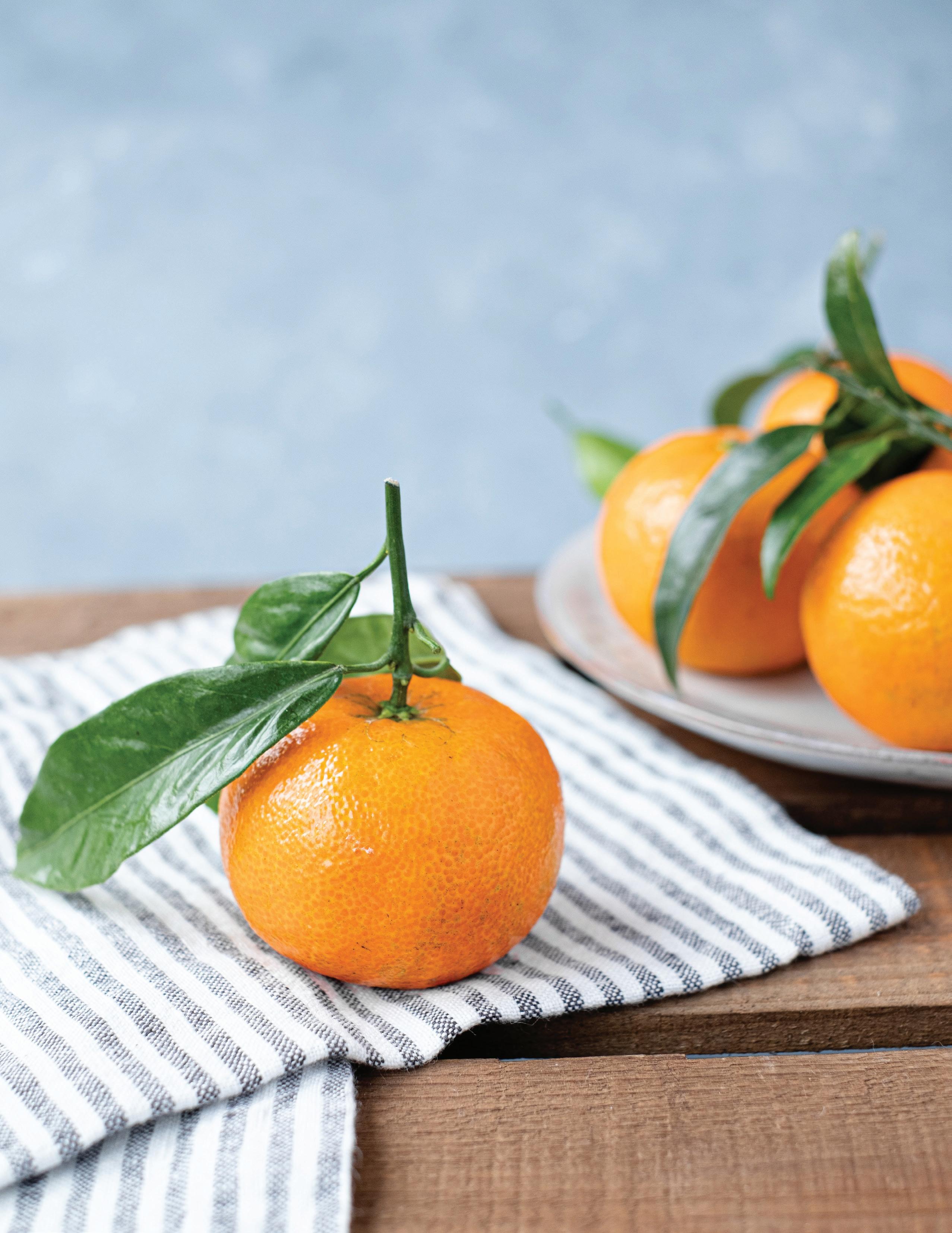
yesterday • today • tomorrow
ace
MISSISSIPPI GULF COAST NATIONAL HERITAGE PUBLICATION | FALL 2023
CULTURAL STORY embr
your
FROM OUR DIRECTOR

As the leaves turn golden and the air gains a brisk edge, we invite you to embark on a journey with us to a time of hidden speakeasies, jazz-filled nights and the zesty allure of satsumas. Our Fall issue, "Satsuma Secrets: Unveiling the Flavors of Prohibition Era," takes you on a captivating exploration of the Kiln during the Prohibition era and the tangy world of satsumas. This fall, we invite you to revel in the beauty of traditions, stories and legacies that have stood the test of time, enriching the tapestry of our coast.
As a reader, you are an integral part of this cultural celebration. We encourage you to engage with the stories shared within these pages, to immerse yourself in the beauty of our collective heritage and to connect with fellow enthusiasts who share your passion. Let us come together to ensure that the flame of cultural heritage burns brightly for generations to come.
Thank you for joining us on this enchanting journey through time and culture. We hope this fall edition eaves you inspired, enlightened and eager to explore the intricate threads that weave our world together.
THANK YOU!
A very special thank you to our contributors for this fall edition. We appreciate your willingness to share the historically cultural, naturally flavorful stories of the Mississippi Coast National Heritage Area. Your generosity helps tell our stories.
Ray Bellande “An Unusual Day in Biloxi” page 6 Captain, Kathy Wilkinson “Whiskey Bayou, A Legend in its Own Time” page 17.
MISSISSIPPI DEPARTMENT OF MARINE RESOURCES
Joe Spraggins, Executive Director
Rhonda Price, MS Coast NHA Director
Andrew Barrett, Heritage Coordinator
Jeff Rosenberg, Heritage Coordinator
RoxAnn Rankin Wicker, Communications Coordinator
Joyce Hart, Administrative Assistant

Marie Lewis, Administrative Assistant
U.S. SENATORS
Cindy Hyde-Smith
702 Hart Senate Office Building
Washington, DC 20510
Phone: (202) 224-5054
Roger Wicker
555 Dirksen Senate Office Building
Washington, DC 20510
Phone: (202) 224-6253
U.S. REPRESENTATIVE (DISTRICT 4)
Congressman Mike Ezell
443 Canon HOB
Washington, DC 20515
Phone: (202) 225-5772
Cover Photo: North American Satsumas
Rhonda Price MSCNHA Director
welcome
MISSIONour
ENHANCE, CONSERVE AND PROVIDE CONNECTIVITY to cultural resources of a unique and defined area through identification, interpretation and promotion.
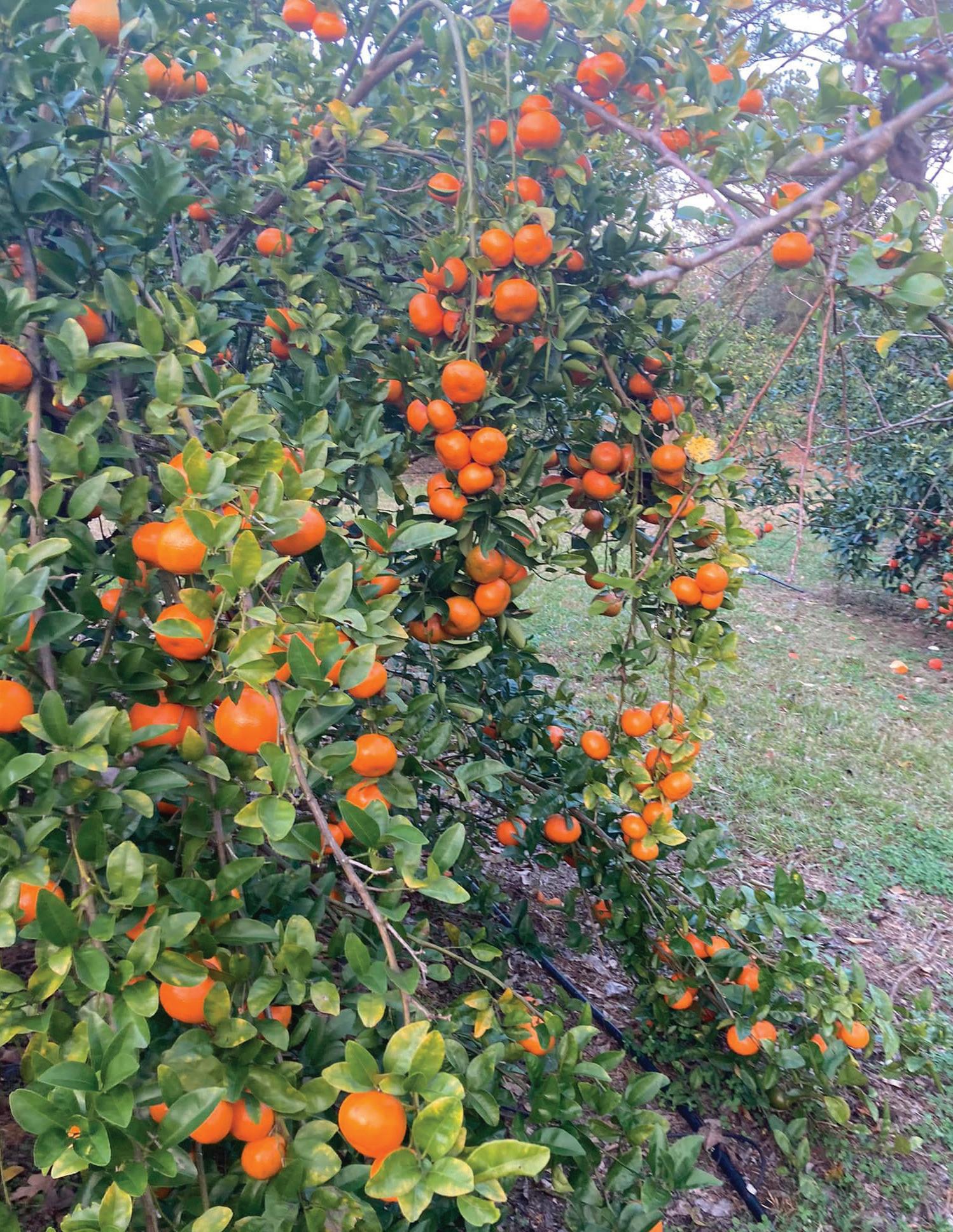
CREATE AUTHENTIC EXPERIENCES and serve as a source of pride. Providing increased awareness and appreciation of their environment, history, culture, traditions and lifestyles.
PROMOTE ECONOMIC SUSTAINABILITY of heritage resources that benefit the entire region and support the long-term enhancement and conservation of those qualities that make the six counties of the MS Coast NHA unique.

TELLING THE AREA’S NATIONALLY SIGNIFICANT STORY to residents and visitors through activities and partnerships that celebrate the area’s unique history, people, traditions and landscapes.
Your MS Coast NHA is a partnership of communities, businesses, governmental agencies, non-profit organizations and individuals who value the region’s rich cultural and environmental diversity, history, natural beauty and traditions.

LIFE
30 Eastridge Farm: Cultivating Love, Creativity and Community in Every Row
35 Seward Farms: Agriculture Meets Adventure
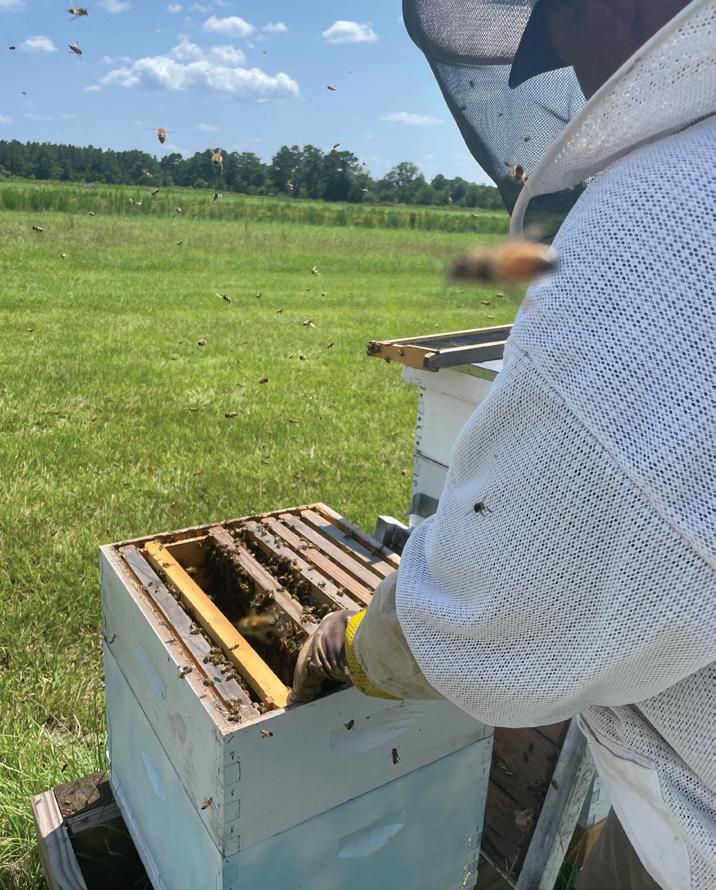
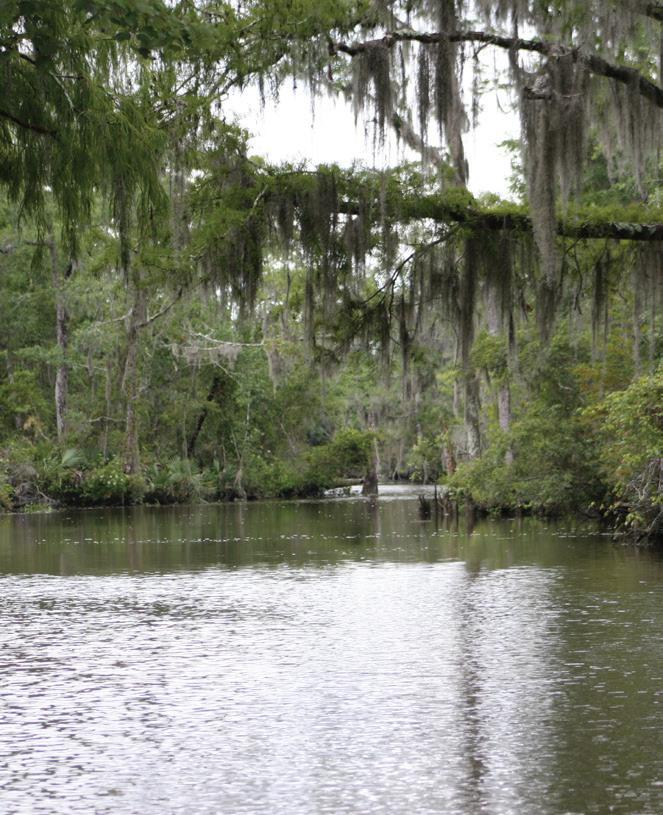


FLAVORFUL
37 Sip and Savor: Satsuma-Infused Cocktails
38 Rum Cake Recipe

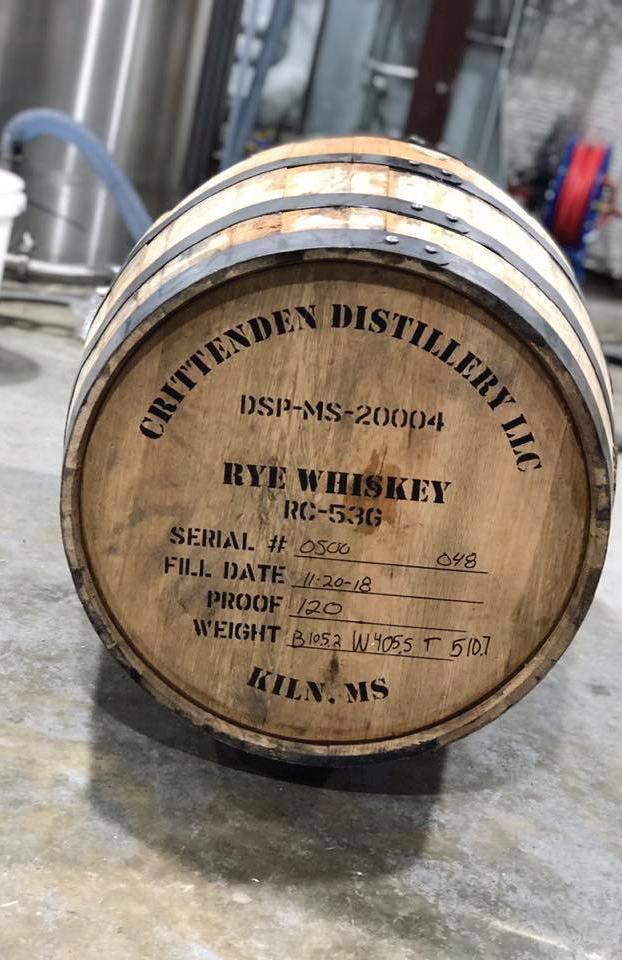
CONTENTS HISTORICAL 2 Kiln's Prohibition Past: The Whispered Tales of Bootlegging 6 An Unusual Day in Biloxi INNOVATIVE 11 Past to Present: Moonshine and Microbreweries NATURAL
Whiskey Bayou: A Legend in its Own Time
Wolf River Blueway COMMUNITY
Simply the Zest: Savoring the Citrus of Mert's Satsumas
17
19
21
11 21 2 38 19 30
HISTORICAL

Historical | 1
Kiln ' s Proh The Whispered
Kiln ' s Proh The Whispered
Words by Roxann Rankin Wicker
Words by Roxann Rankin Wicker
Traveling westward on Interstate 10, you will eventually find the DeLisle-Kiln exit. Perhaps there is a moment in the car where you begin to question its pronunciation. Is it “De-Lyle” or “De-Lil?” Moreover, how does the name “Kiln” transform a pleasantry to one's ear as “The Kill” by locals? One will never know!
Traveling westward on Interstate 10, you will eventually find the DeLisle-Kiln exit. Perhaps there is a moment in the car where you begin to question its pronunciation. Is it “De-Lyle” or “De-Lil?” Moreover, how does the name “Kiln” transform a pleasantry to one's ear as “The Kill” by locals? One will never know!
You will find Kiln nestled 13 miles northwest of Bay St. Louis, Miss. Kiln bears a fascinating history that echoes whispers of its notorious past to this day. Originally named for the large kilns used by early French settlers to burn charcoal for sale, Kiln's heritage boasts tales of intrigue and prominence. Most notably Kiln was famous for two things, one of the biggest and best sawmills in the country, and the other, moonshine whiskey.
You will find Kiln nestled 13 miles northwest of Bay St. Louis, Miss. Kiln bears a fascinating history that echoes whispers of its notorious past to this day. Originally named for the large kilns used by early French settlers to burn charcoal for sale, Kiln's heritage boasts tales of intrigue and prominence. Most notably Kiln was famous for two things, one of the biggest and best sawmills in the country, and the other, moonshine whiskey.
In the early 1900s, Kiln thrived as the busiest town between Hattiesburg and New Orleans, thanks to its strategic location. It played a pivotal role in supplying tar, shipped down the Jourdan River by schooners, and used for caulking ships in New Orleans. In 1912, the Edwards Hines Lumber Company built a large sawmill in Kiln. It is said that men from across the country came to work at the mill, most living within walking distance or a mile radius.
In the early 1900s, Kiln thrived as the busiest town between Hattiesburg and New Orleans, thanks to its strategic location. It played a pivotal role in supplying tar, shipped down the Jourdan River by schooners, and used for caulking ships in New Orleans. In 1912, the Edwards Hines Lumber Company built a large sawmill in Kiln. It is said that men from across the country came to work at the mill, most living within walking distance or a mile radius.
However, it was during this period that the town's reputation took an illicit turn as the Mississippi Prohibition Act was passed in 1908.
However, it was during this period that the town's reputation took an illicit turn as the Mississippi Prohibition Act was passed in 1908.
Embracing the clandestine trade, Kiln swiftly evolved into a moonshine manufacturing hub. Moonshine earned its name from covert distilling under moonlight, a tactic used to evade authorities and supplement income during prohibitive times, blending secrecy with resourcefulness. The area's hidden distilleries produced a renowned quality of whiskey that found its way as far
Embracing the clandestine trade, Kiln swiftly evolved into a moonshine manufacturing hub. Moonshine earned its name from covert distilling under moonlight, a tactic used to evade authorities and supplement income during prohibitive times, blending secrecy with resourcefulness. The area's hidden distilleries produced a renowned quality of whiskey that found its way as far
2 | Embrace Your Cultural Story
2 | Embrace Your Cultural Story
ibition Past Tales of Bootlegging
north as Wisconsin. Records from historians reveal that over 1,000 sacks of sugar were brought to Kiln each week for the secret distilling process, attesting to the scale of this illegal enterprise.

The quality and easy availability of Kiln's moonshine earned it the infamous moniker "moonshine capital of the world." The Kiln liquor was so highly regarded as one of the highest alcoholic proofs dubbing it names such as “White Lightening, Shinny and Jourdan River Dew.” Legends and tales abound about the town's covert operations scattered along the Jourdan River, and one of the most notorious figures tied to this era was none other than the infamous Al Capone.
Capone was said to have orchestrated a sophisticated network of "rum runners,” a daring small fleet of power boats that would smuggle liquor into open waters. Tall tales of rum runners using the hideout at Holly Bluff Gardens, an enchanting spot veiled with giant live oaks, cypress and towering pines along the Jourdan River, to make haste into the shadows.
Copyright (c) Leslie Jones, All Rights Reserved
Historical | 3
The rum runner boats were said to have outrun U.S. Coast Guard boats that could not venture into the shallow waters of the Mississippi Sound. Kiln and parts of Hancock County made the perfect setting for this smuggling enterprise of moonshine, either manufactured or distilled.

Rum runners would make their way in and out of sight due to their speed and ability to cut in and out of the bayou waterways of the Jourdan River. These small boats would transport Kiln's sought-after whiskey during the night to offload into larger ports, such as New Orleans. After unloading their cargo into the port, the smugglers would then transport the shine to cars, trucks and railway cars to stateside destinations, hence the name, “bootleggers.”
It is said that Capone’s army of bootleggers transported the white lightning to faraway destinations such as Galveston, sections of Tennessee and Chicago, which served as a primary market for his illegal goods. Kiln’s reputation for producing top-notch moonshine was well-deserved, making it a highly sought-after commodity during the Prohibition era.
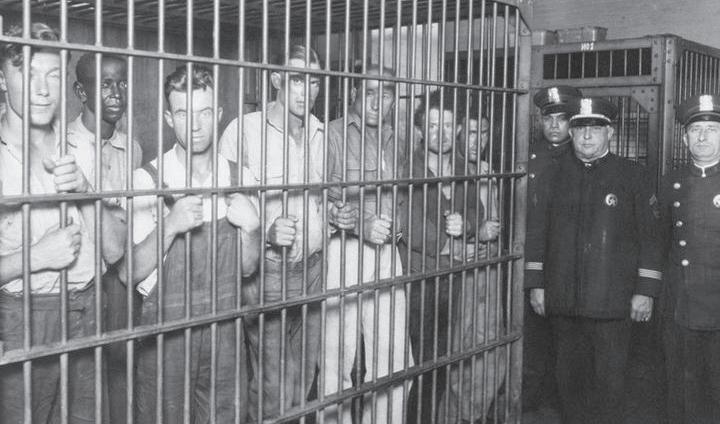
Though the days of Prohibition have long since passed, the spirit of Kiln's moonshine past still lingers, tempting those who walk along the banks of the Jourdan River. The town's storied history leaves behind a legacy that captures the imaginations of locals and visitors alike. Kiln stands as a testament to the strength of a small community that carved its place in history, even amidst the shadows of Prohibition and crime.
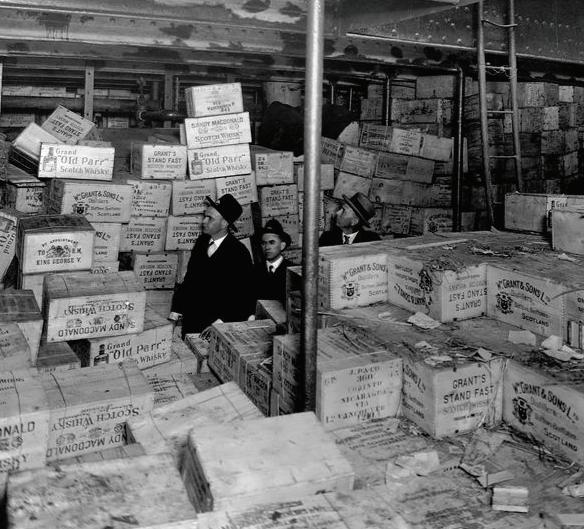 (Top to bottom)Rum Runner seized in New Orleans Port., Credit: Smithsonian; Sailors of the 'I'm Alone', New Orleans Police Department, Credit: NY Daily News; Courtesy of US Coast Guard Archives
(Top to bottom)Rum Runner seized in New Orleans Port., Credit: Smithsonian; Sailors of the 'I'm Alone', New Orleans Police Department, Credit: NY Daily News; Courtesy of US Coast Guard Archives
4 | Embrace Your Cultural Story
As time goes on, the echoes of the rum runners and the concealed distilleries may have faded, but the allure of Kiln's storied past remains ever-present. The town's journey from being a bustling tar supplier to the "moonshine capital of the world" is a reminder of the human spirit's ability to adapt, even in the face of tumultuous times.


In the heart of the charming Kiln, the secrets of the past are still whispered, serving as a testament to the indelible mark left by its moonshine legacy. Embracing its history while moving forward, the Kiln continues to be a fascinating destination that offers a glimpse into a time when the pursuit of Prohibition-fueled dreams shaped its identity.

Newspaper clippings courtesy of
County Historical Society
Hancock
Historical | 5
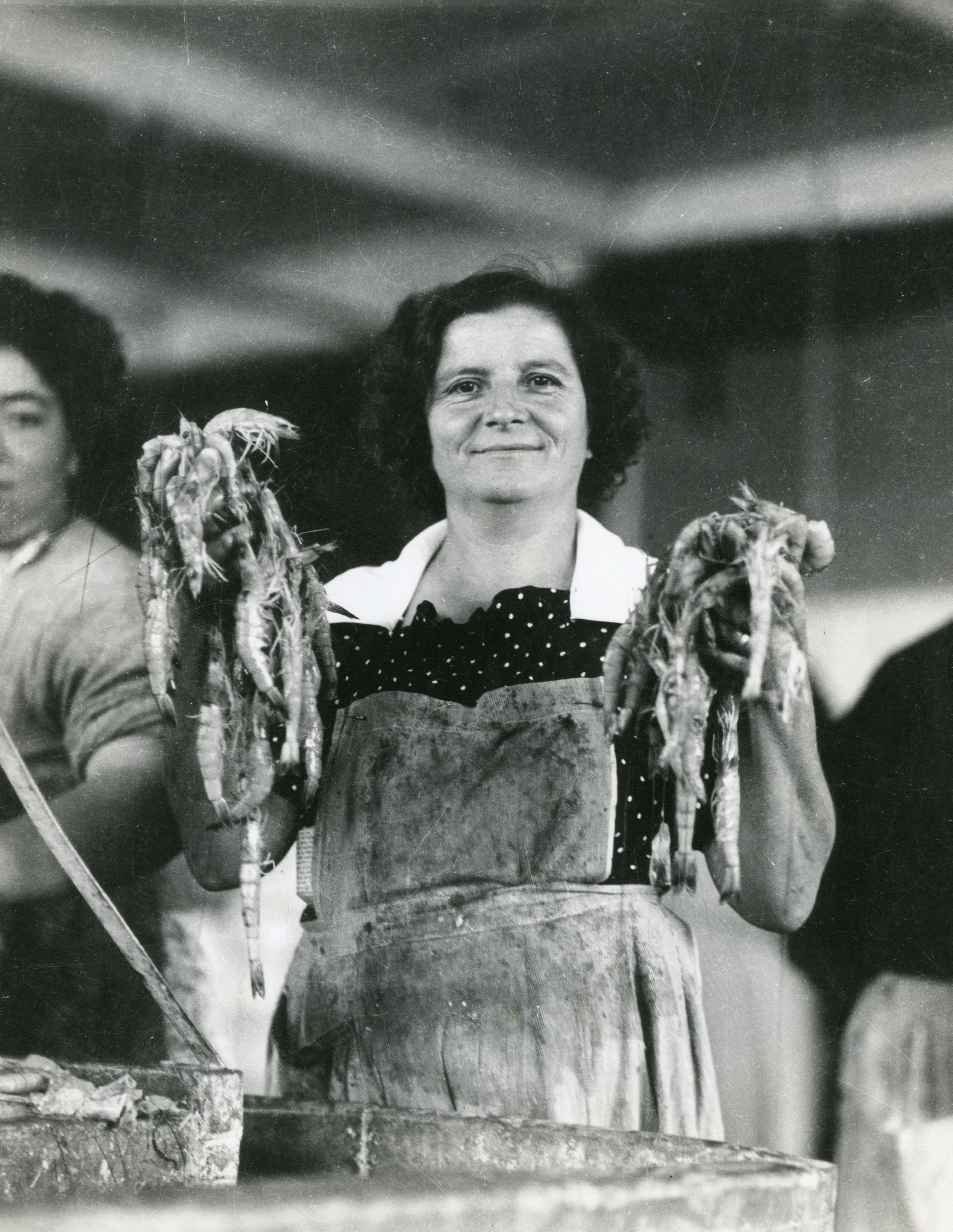
6 | Embrace Your Cultural Story
Tis January 1922 and Prohibition is no longer the latest government interference in the minds of common folks. The lady seafood workers are busy in the oyster season as their spouses and sons harvest the fattened mollusks from fecund waters of the Louisiana marshes and Pass Christian reefs. The tourist club is fully subscribed with Midwest ‘Yankees’ and they are enamored with the mild winter weather as they enjoy a round of golf or a game or roque in the city park.

Rumrunners come and go with their illicit cargoes of spirituous liquors and moonshiners are busy as well distilling corn mash in their crude stills which are proliferating in the surrounding piney woodlands. The federal revenue agents are energetic as well, seeking to discover and destroy illegal whiskey manufacturing and punish those responsible. They are ably assisted by the U.S. Coast Guard whose revenue cutters ply the Mississippi Sound seeking to interdict and capture imported wine and liquor from foreign or domestic shores.
This is no tall tale or imaginative story, but on or around January 15, an unknown sailing vessel flying the Cuban flag dropped anchor off Biloxi near Dog Key. While the captain of the fishing schooner came ashore for water and provisions, the Naomi, a motor vessel with armed men, boarded the mystery ship and captured the crew using gunfire aimed at their feet as persuasion. These ‘Biloxi pirates’ then “convinced” the frightened sailors to offload 110 cases of ex-pensive champagne, cognac and bonded whiskey to the waiting Naomi.
After the raid, the “Biloxi pirates” motored up Back Bay in the vicinity of Popp’s Ferry where they deposited their liquid loot on shore, albeit in a haphazard fashion, as their pursuers would discover. After receiving a reliable tip, the search for the stolen, but illegal, cargo was led by U.S. Deputy Marshal A.W. Loposser, four Harrison County Deputy Sheriffs, Constable W.N. Bolton and Biloxi police officers Charles Lowd, Alonzo Gabrich, Richard Grady, George Mon and Joseph Mattina. Arriving in the vicinity of Popp’s Ferry, the maritime posse discovered some, but not all, the stolen goods.
Those implicated in the pirate raid at Dog Key and indicted by a federal grand jury were Harold Moran, Edward Moran, Eddie A. Moran, Frederick Moran, Moses Moran, J. Fisher and Johnny Kennedy. They were originally charged in federal court with violating the Volstead Act by having unlawful possession and importing liquor and smuggling and conspiracy to smuggle under the revised statutes of that law. Their trial was scheduled for federal court on March 6 with the charge of piracy with the connection of bringing liquor into the United States.
On March 2, the seven defendants charged with piracy on the high seas were told that their trial had been postponed until the next federal court term.
Historical | 7


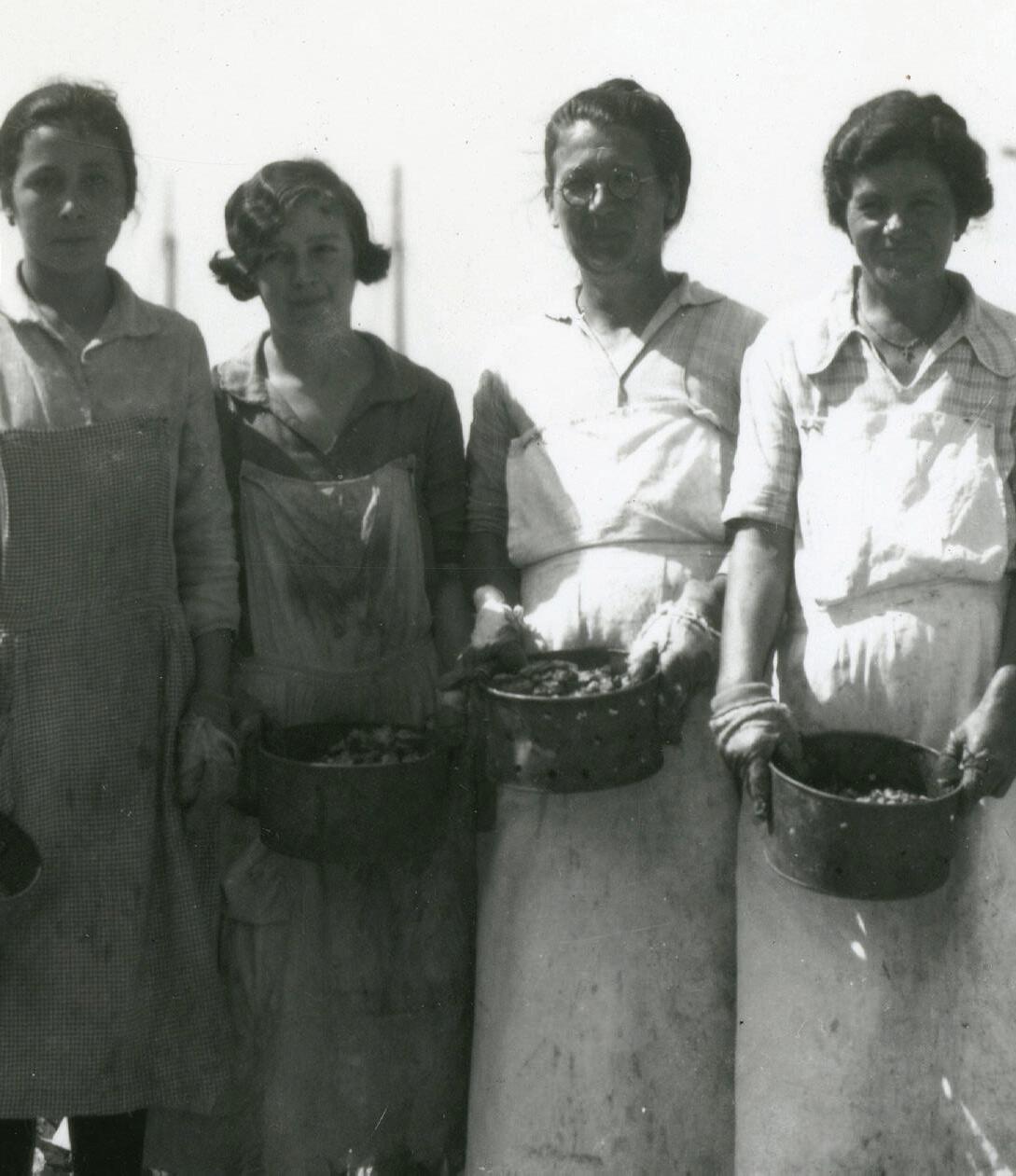
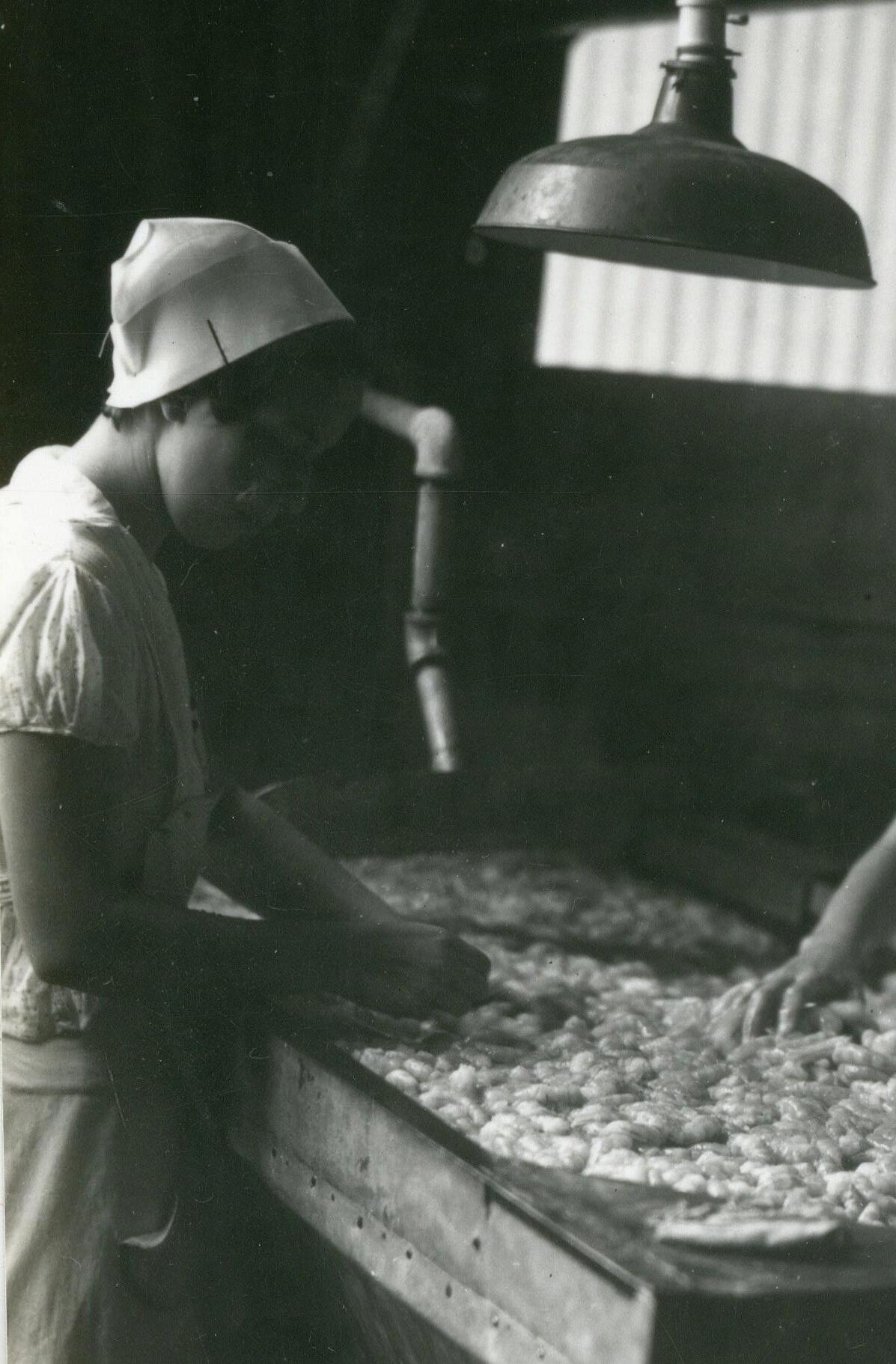
8 | Embrace Your Cultural Story
The Moran piracy case decision came in mid-June 1923. Edward Moran, Edward A. Moran, Harold Moran and Moses Moran were each assessed a $500 fine. The charges of conspiracy and liquor possession were dismissed. J. Fisher and Johnny Kennedy were not charged or fined.

Thus, ending a very bizarre legal situation of the Prohibition Era. Unequivocally, this might have been the strangest on the Mississippi Gulf Coast.
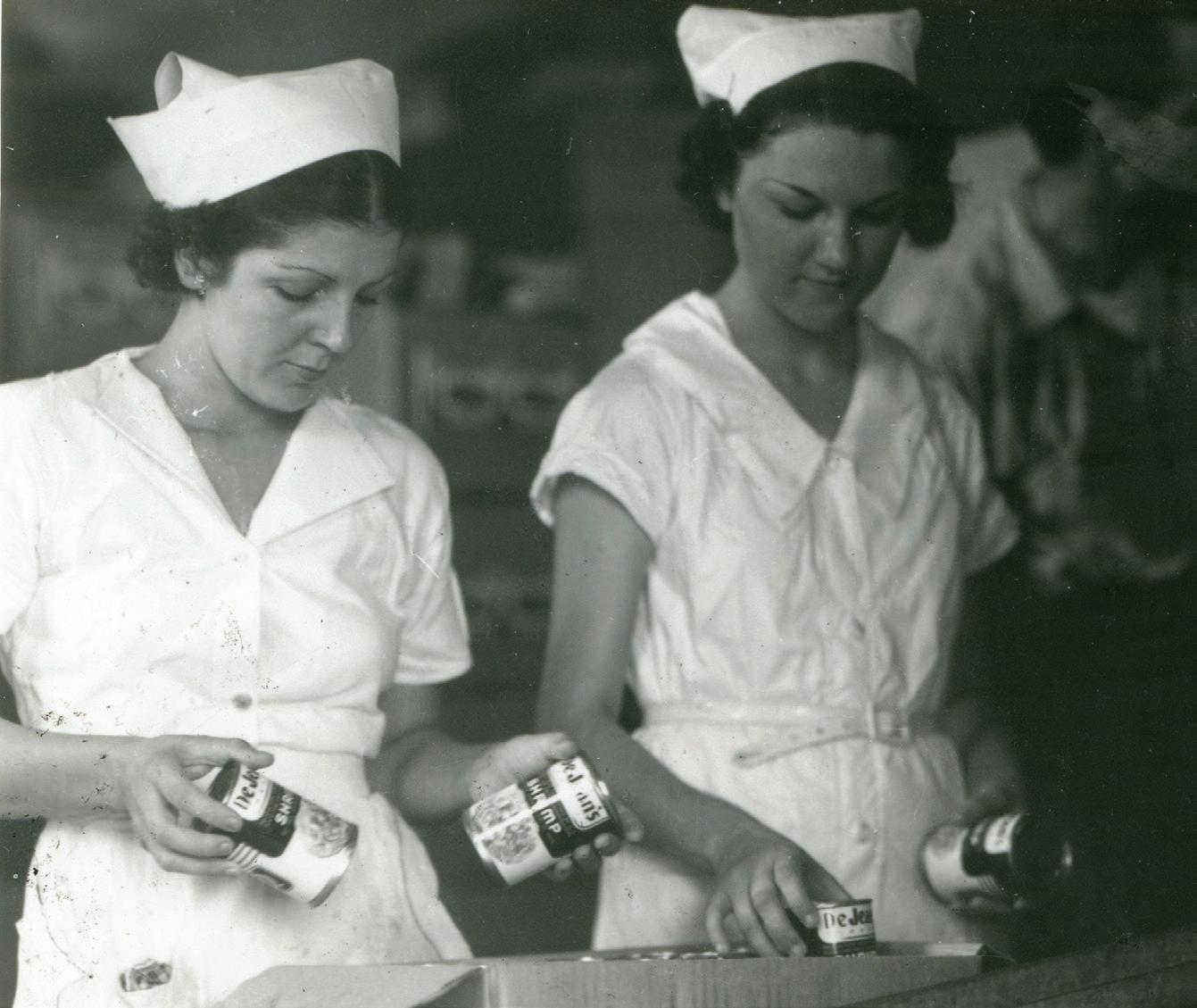
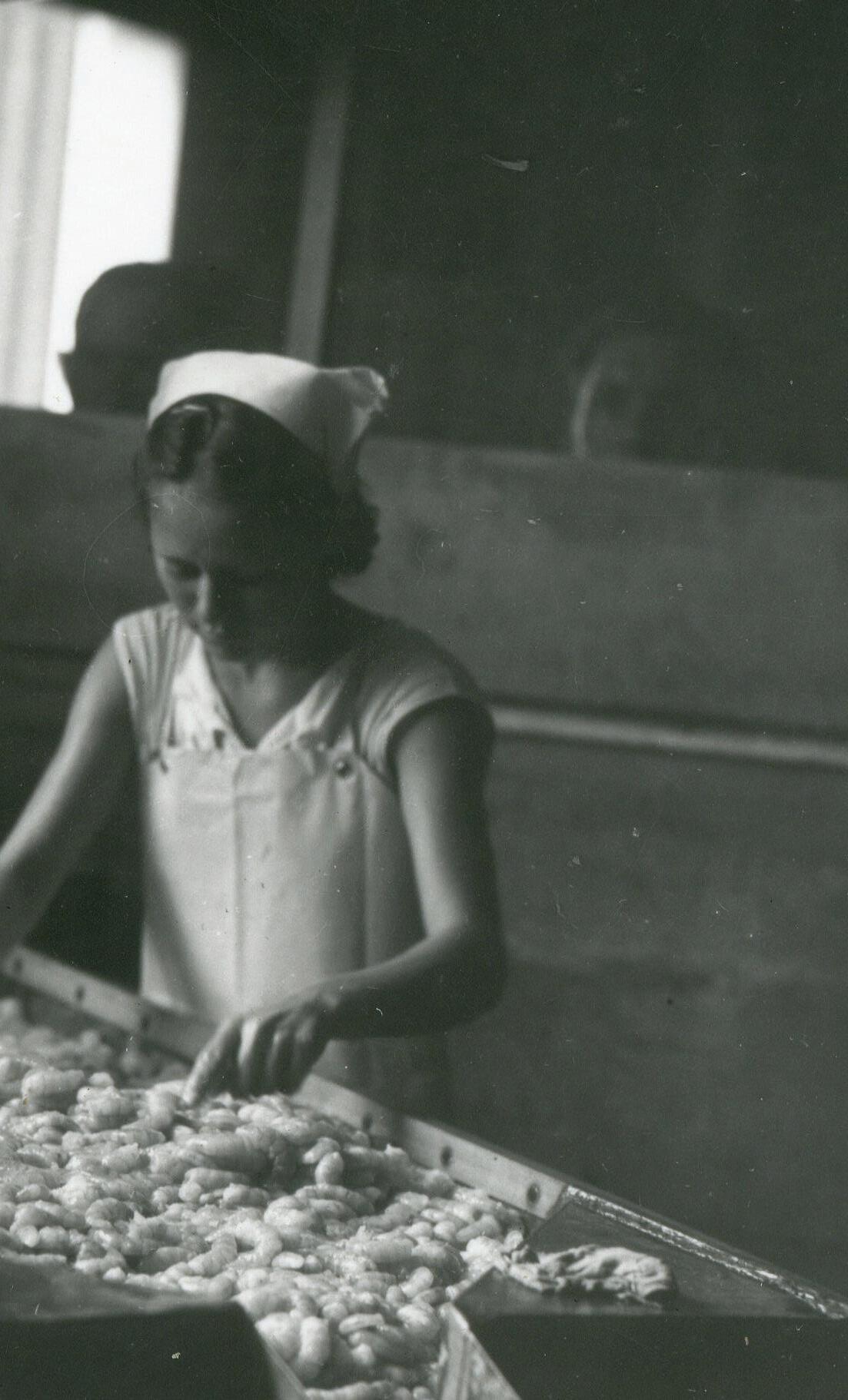
REFERENCES:
The Daily Herald, ‘Alleged pirates operate on booze boat causing biggest raid in years’, January 16, 1922, p. 1.
The Daily Herald, ‘Biloxi men bound over’, January 17, 1922, p. 1,
The Daily Herald, ‘Biloxi automobiles seized in connection with liquor raids’, January 18, 1922, p. 1.
The Daily Herald, ‘Moran trial set for next Monday; Three weeks term almost certain’, February 28, 1922, p. 1.
The Daily Herald, ‘The Herald wins in damage suit’, March 2, 1922, p. 1. The Daily Herald, ‘
The Daily Herald, ‘ The Daily Herald, ‘ The Daily Herald, ‘Prysmzel Capitan accused of piracy’, November 19, 1927, p. 9.
Historical | 9
INNOVATIVE
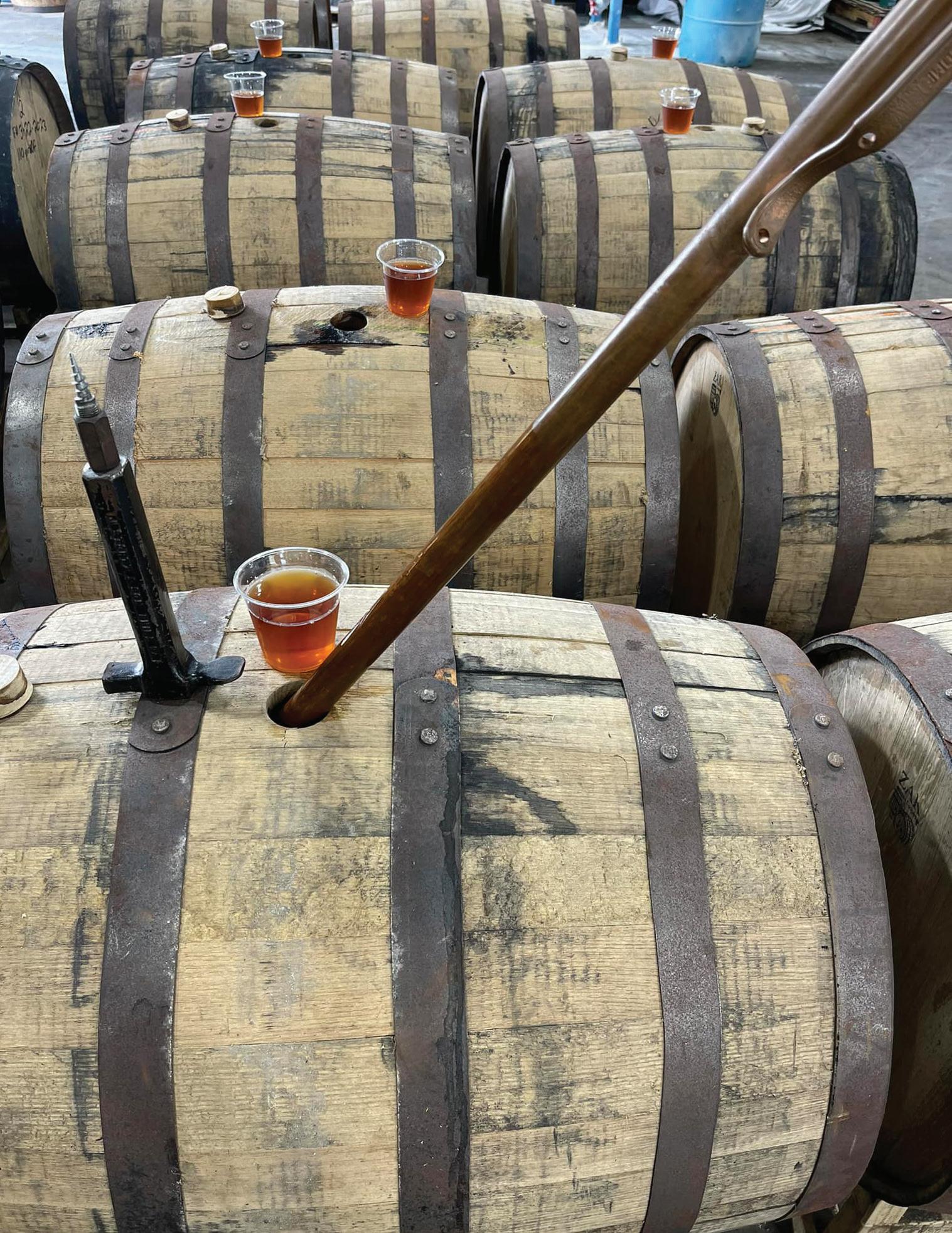
10 | Embrace Your Cultural Story
past to present MoonShine to MicroBreweries
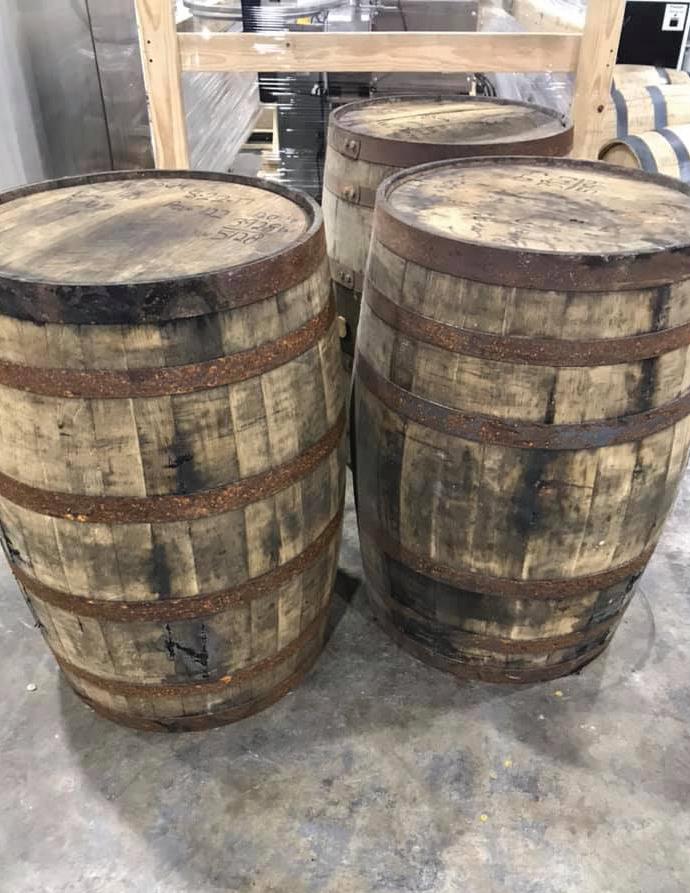 words
words
by Roxann Rankin Wicker
Innovative | 11
SomethingCheersto About
Moonshine, once synonymous with hidden stills and secret distilleries, has come a long way from its illicit origins to the thriving microbrewery scene of today. The journey from secret stills to the vibrant microbrewery scene is a fascinating one, closely intertwined with the history of alcohol in America. Tracing this evolution, it became clear Prohibition played a pivotal role in influencing the alcohol industry.
The shadowy era of Prohibition in the 1920s played a key role in shaping the trajectory of alcohol production. Prohibition, a nationwide ban on the production, sale and transportation of alcoholic beverages from 1920 to 1933, pushed alcohol production underground. This period birthed a culture of underground distilling, creating a folklore of speakeasies, bootleggers and hidden recipes that would be handed down through generations.
Enterprising individuals turned to crafting homemade moonshine, an unregulated and often unsafe concoction, to quench the public's insatiable thirst for alcohol. This era not only gave rise to ingenious methods of distillation but also forged a rebellious spirit that would later fuel the craft beer revolution.
As Prohibition was repealed in 1933, the alcohol industry began to shift towards legality, but moonshine didn't disappear. Instead, it laid the groundwork for the rise of microbreweries. With the emergence of craft beer culture in the 1980s, small-scale brewers found inspiration in the artisanal methods of moonshiners. The same dedication to quality, experimentation and unique flavors that moonshiners prized was adopted by microbreweries, leading to a revival in beer production.
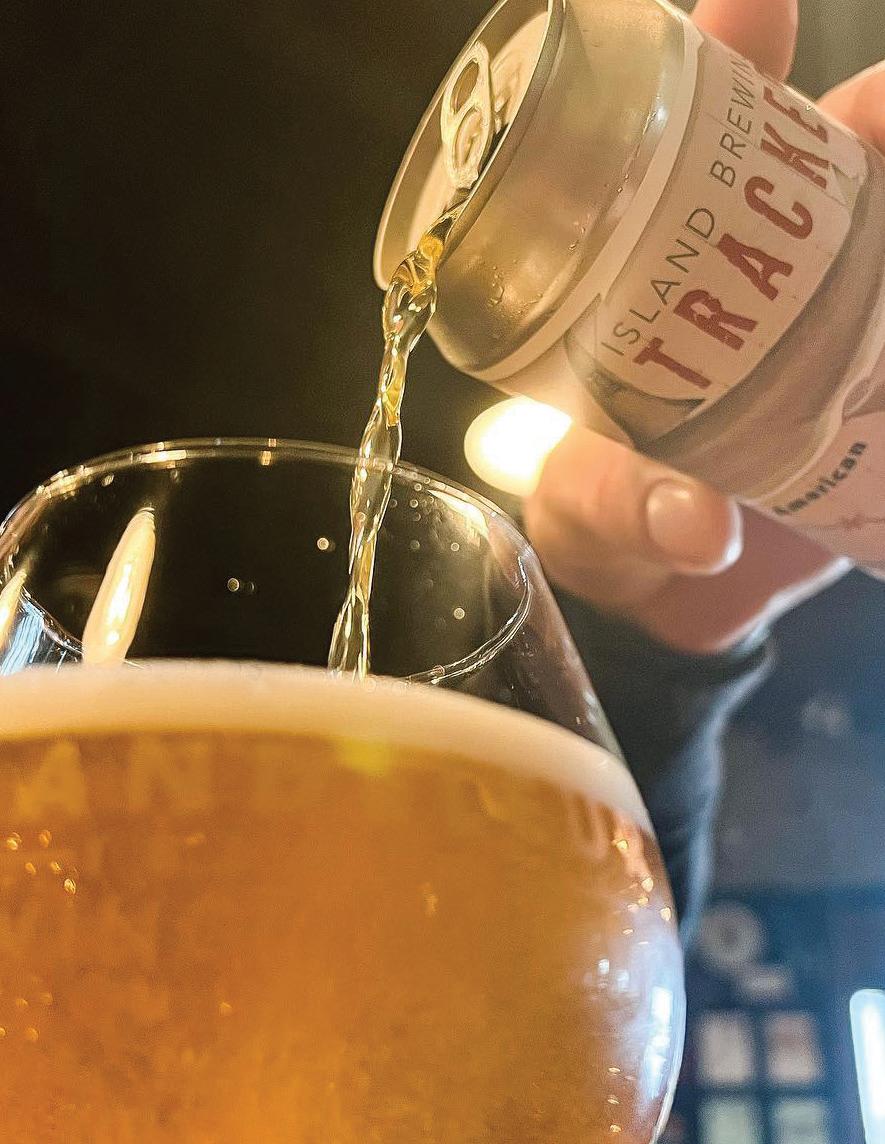
12 | Embrace Your Cultural Story
CrittendenKilnDistillery, I
n the quiet town of Kiln, Miss., where the scent of innovation mingles with the allure of tradition, a pioneering gem stands tall: Crittenden Distillery. As the sole local distillery on the coast, they've not only carved a niche, but have also redefined the spirit of craftsmanship.
Bridging the gap between time-honored methods and modern ingenuity, Crittenden Distillery proudly produces Kiln Shine Pure Shine, a masterpiece born from the art of "corn whiskey" crafting. With a nod to heritage, this spirited elixir tantalizes palates and evokes a sense of nostalgia.

Amid the tumultuous waves of COVID, Matt Crittenden, the visionary behind the brand, exhibited unwavering resilience. As challenges forced adaptation, the distillery's doors remained open. Matt's determined spirit remained tenacious as he balanced convention and innovation, amplifying his dedication to producing exquisite products. In the face of hard times, Crittenden's determination transformed obstacles into opportunities, a testament to his unyielding pursuit of excellence.
Innovation doesn't stop there. Embracing experimentation, Crittenden Distillery ages its corn, rye and bourbon whiskey in oak casks, meticulously maturing flavors within the barrel house. This fusion of grains and oak infuses each sip with a complexity that embodies the essence of time itself.
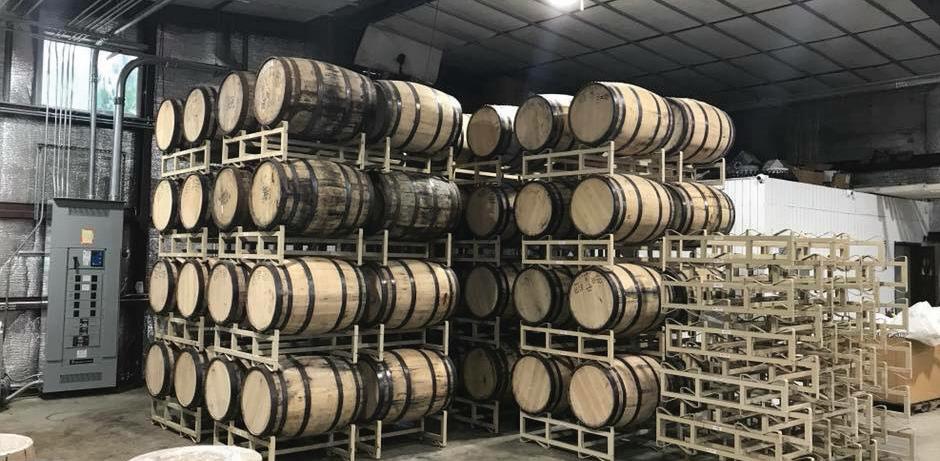
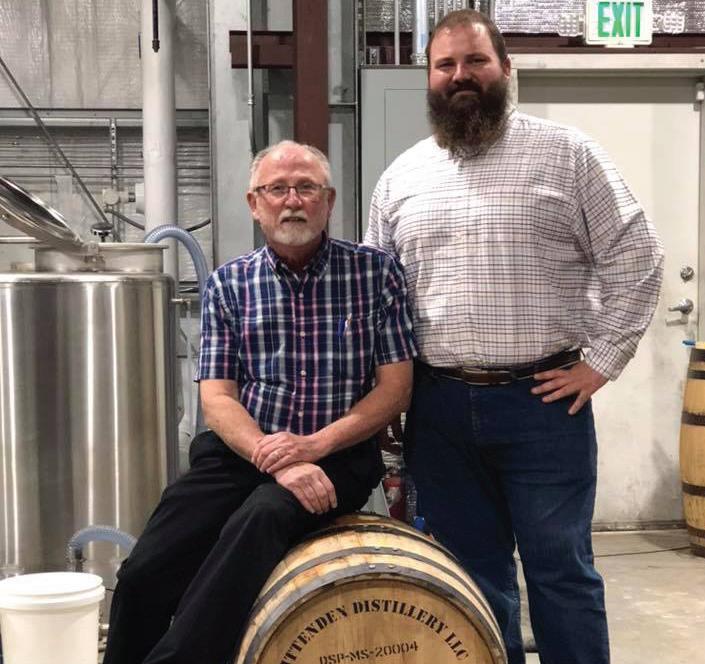
In an industry often steeped in convention, Crittenden Distillery radiates innovation, encapsulating the daring spirit of Kiln. Their concoctions are not just libations; they are a testament to the boundless possibilities when old-world charm embraces the bold unknown.
Tours and tastings are available by appointment only. Crittenden Distillery 1993 Hwy 43, Kiln, MS 39556, (228) 255-2058.
Innovative | 13
Photos courtesy of Crittenden Distillery
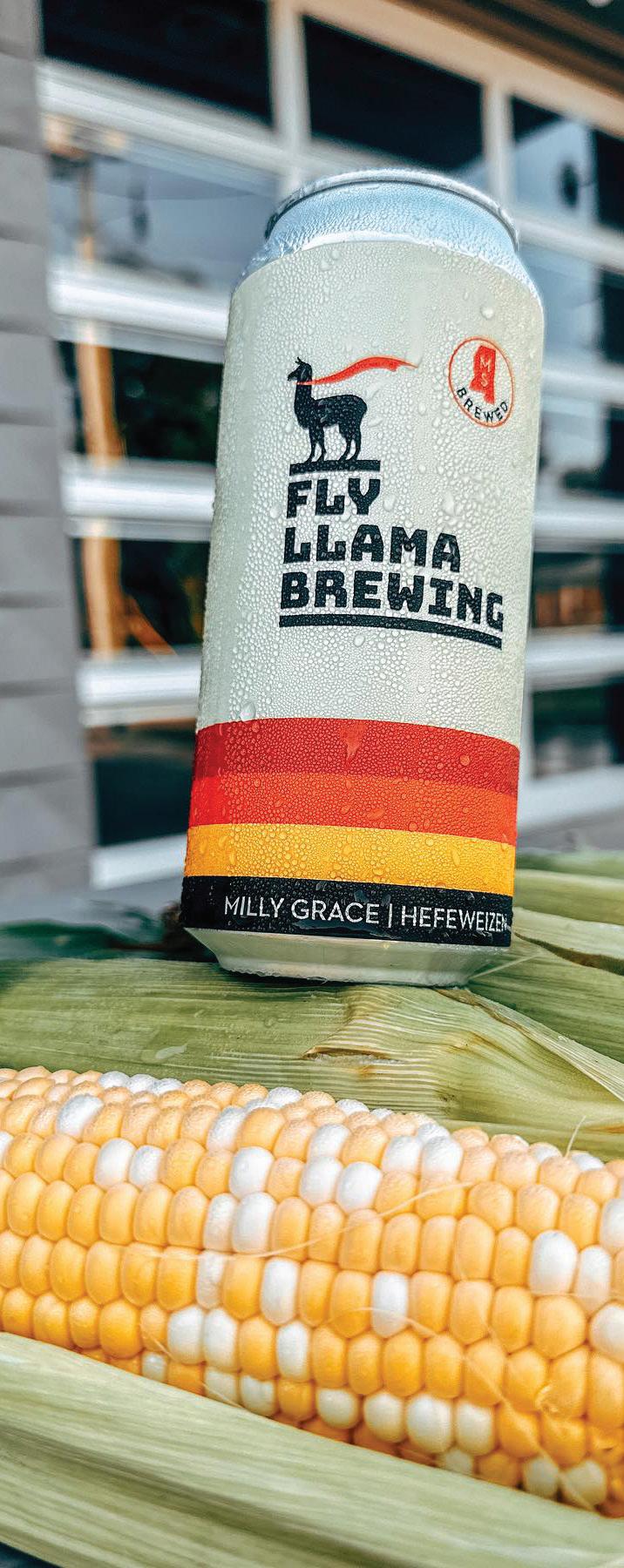
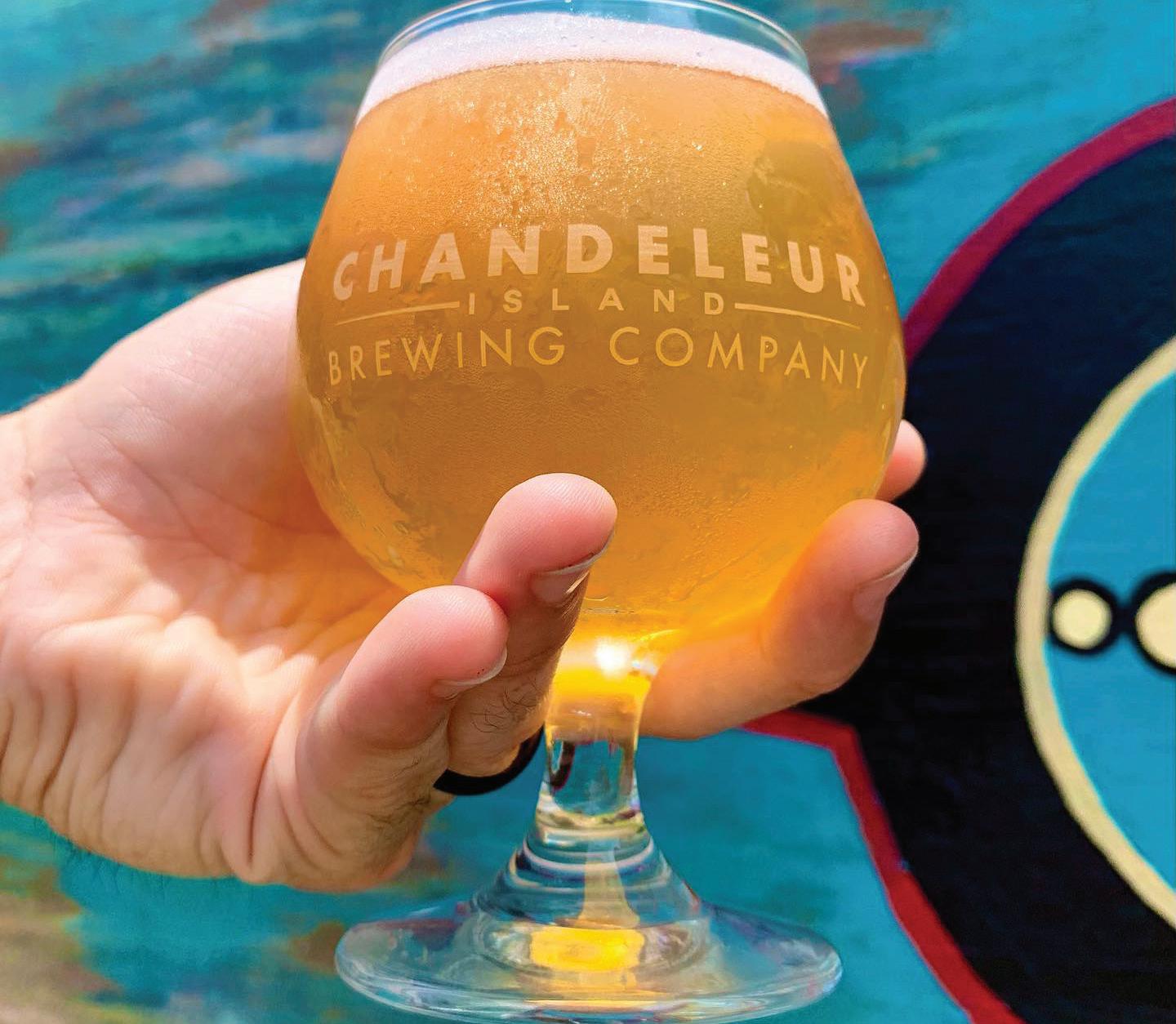
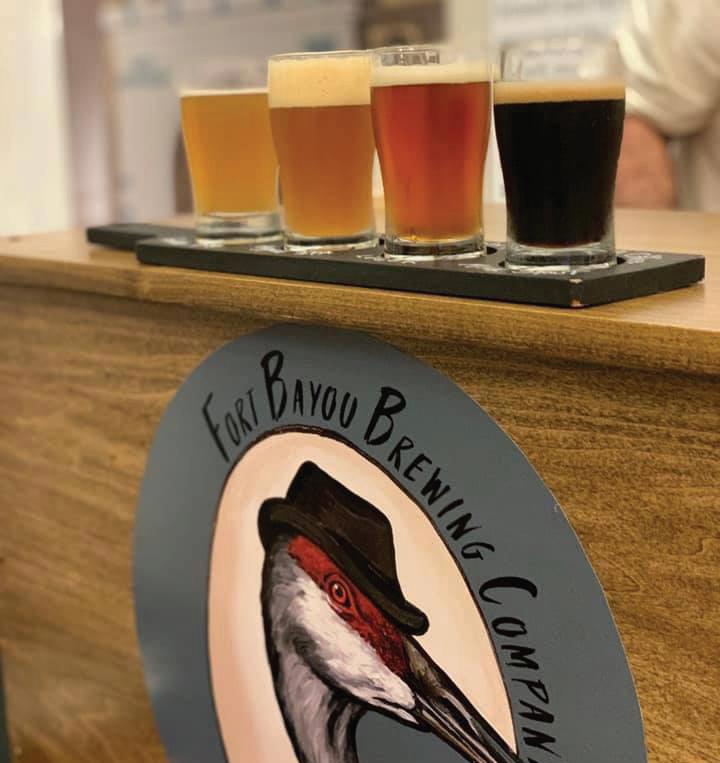
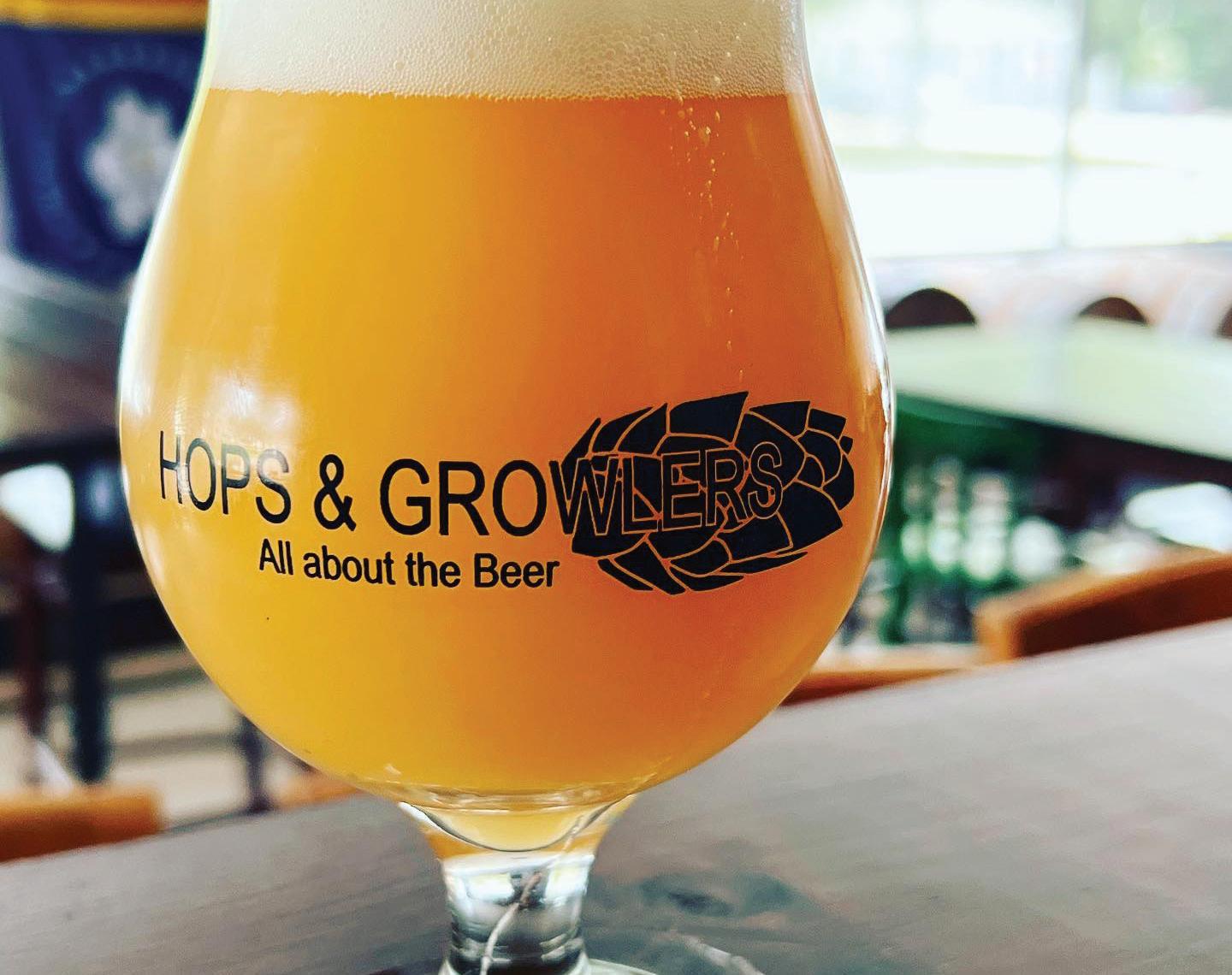
14 | Embrace Your Cultural Story
Fast-forward to the present day, and we find ourselves in the midst of a microbrewery renaissance. These small-scale, independent breweries have breathed new life into the alcohol industry, offering a diverse array of unique, flavorful and meticulously crafted beers. Unlike the moonshine of yesteryears, microbreweries adhere to strict quality standards, producing brews that have garnered a loyal following of enthusiasts willing to pay a premium for a superior sip.
Microbreweries, defined as small, independent brewers producing limited quantities of beer, have become a thriving sector of the alcohol industry. Not only do they offer diverse flavors and styles, but they also contribute significantly to local economies. According to the Brewers Association, in 2020 alone, microbreweries generated approximately $31.9 billion in revenue, showcasing their economic impact.
In terms of revenue, microbreweries have become a force to be reckoned with. The Mississippi Gulf Coast region witnessed the arrival of microbreweries relatively late compared to other areas of the country. It wasn't until the mid-2000s that craft beer enthusiasts began to establish microbreweries in the region. These establishments brought a fresh perspective to the local alcohol scene, attracting tourists and locals alike with their distinctive brews and welcoming atmospheres.
Their impact extends beyond the mere production of beer; microbreweries invigorate local economies, create jobs and contribute to tourism as beer aficionados flock to tasting rooms and beer festivals.
The journey from moonshine to microbreweries is a testament to the adaptability of the alcohol industry. While moonshine once thrived in the shadows of Prohibition, microbreweries have emerged as legitimate players in the modern alcohol landscape, showcasing innovation and craftsmanship while contributing substantially to local economies. The Mississippi Gulf Coast's integration into the microbrewery movement highlights the far-reaching impact of this evolution, connecting local communities to a rich history of alcohol production.
How Craft Beer & Moonshine Relate
1.Shared Roots: Both microbreweries and moonshine have their origins in homemade alcohol production, stemming from a desire to create unique flavors outside of commercial norms.
2.Small-Scale Production: Just like microbreweries focus on producing limited quantities of beer, moonshiners produce small batches of distilled spirits, often prioritizing quality over quantity.
3. Craftsmanship: Both microbreweries and moonshiners emphasize the art and craft of alcohol production, using traditional methods and paying close attention to details to create distinctive flavors.
4. Innovative Ingredients: Both craft beer and moonshine makers experiment with unique ingredients, pushing the boundaries of flavor by incorporating spices, herbs, fruits, and more into their products.
5. Local Appeal: Both microbreweries and moonshine often have a strong local focus, attracting enthusiasts who appreciate supporting small-scale, communitybased producers.
6. Distinctive Flavors: Just as microbreweries aim for diverse and distinct beer profiles, moonshiners strive to create distinct spirits by refining their recipes and production techniques.
7. Creative Labeling: Both craft beer breweries and moonshine producers frequently use creative and artistic labels to capture the essence of their products, reflecting the unique nature of what's inside.
8. Tasting Experiences: Microbreweries and moonshiners alike offer tasting experiences, providing customers with the opportunity to savor and learn about the intricate flavors and production methods behind their products.
9. Cultural Heritage: Both craft beer and moonshine are often tied to cultural heritage, reflecting regional traditions and histories in the flavors, ingredients, and techniques used.
10. Legal Evolution: While moonshining has historically been associated with illegal production, both industries have evolved over time. Craft beer laws have changed to accommodate microbreweries, and artisanal distilleries have emerged legally, giving moonshiners a legitimate platform for their craft.
Innovative | 15
NATURAL
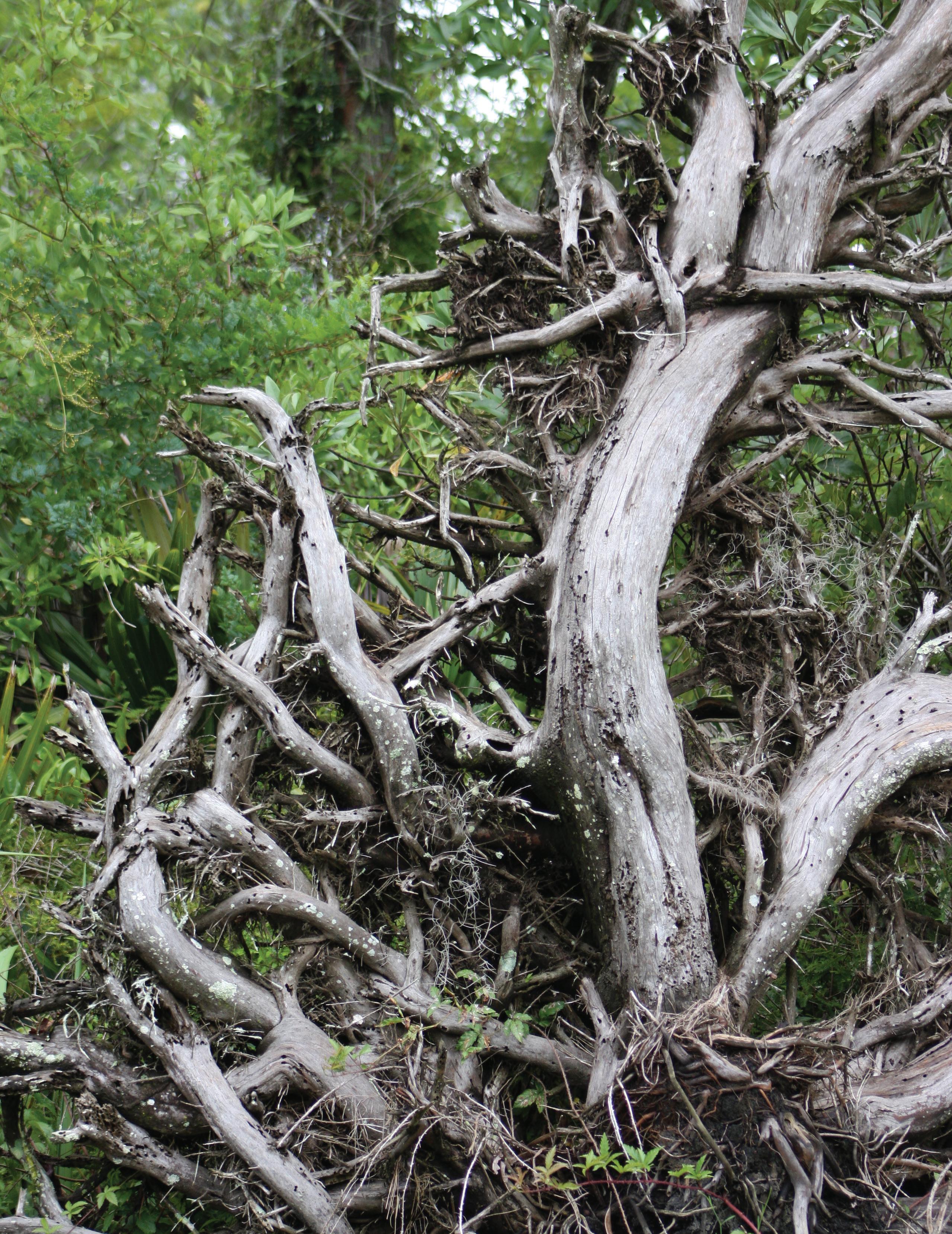
16 | Embrace Your Cultural Story
Whiskey Bayou















A Legend in its Own Time









Whiskey Bayou has long been the stuff of legendary lore. A well-known waterway in the lower Pascagoula River swamp, Whiskey Bayou, which, according to local legend was named for the moonshiners who brought their stills to the swamp to evade the “revenooers” during Prohibition. Tales of bootleggers, their stills hidden amidst the moss-draped cypress trees, weave a captivating narrative of secrecy and adventure. Back in those days, it would have been easy for the moonshiners to conceal their stills among the dense under-story thereby avoiding the scrutiny of the federal agents who were intent on stopping the flow of untaxed and illegal whiskey.
By Captain Kathy Wilkinson























For generations, whispers of moonlit rendezvous and daring escapades have echoed through the bayou's waters. The bayou's labyrinthine channels and dense canopies served as a perfect veil for moonshiners. No one will ever know as there is no record of law enforcement pursuits. Shrouded in mystery, this elusive waterway has carved its name into the local history, continuing to captivate imaginations, leaving us with the allure of Whiskey Bayou, forever etched in the region's historical lore.
Accessible only by water, Whiskey Bayou measures a little over a mile long and connects Buzzard Lake to Creole Bayou. Although modest in length,









































Whiskey Bayou is teeming with flora and fauna and defines the very essence of the Pascagoula River’s vast tupelo and cypress swamp. With the days of stillbusting and bootlegging behind us, Whiskey Bayou remains a popular destination for locals. Fishermen ply the waters of Whiskey Bayou hoping to hook a bass, catfish or bream. Whiskey Bayou is a nature-lover’s paradise and boaters idle along looking intently for alligators hiding among the cypress knees.
The Pascagoula River is the last large (by volume) unimpeded river in the lower 48 states. Whiskey Bayou is only one of the many bayous, creeks and waterways that make up the
























Natural | 17
river’s basin, but it is arguably one of the most beautiful. Along the banks of Whiskey Bayou grow numerous trees, including cypress, tupelo, gum, red maple, bay, magnolia and oak, draped in Spanish moss. Palmettos, ferns and vines dominate the under story, along with many varieties of native seasonal blooms such as blue flag irises, pickerel weed, swamp lilies and wild hibiscus. And among all the vegetation, a keen observer might see a variety of woodpeckers, warblers, herons and raptors, along with monarch and black swallowtail butterflies.
Whiskey Bayou is truly a haven for both the moonshiner and the nature lover alike.
Tours of the lower Pascagoula River marsh and swamp, including Whiskey Bayou, are offered daily by Eco-Tours of South Mississippi. For reservations, call 228-297-8687.
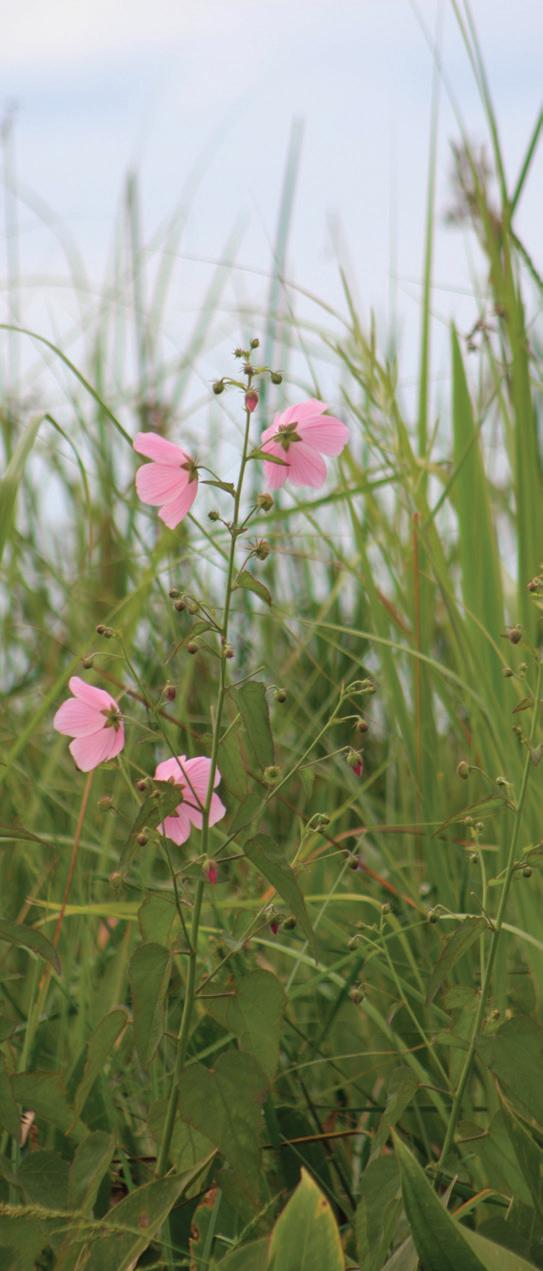
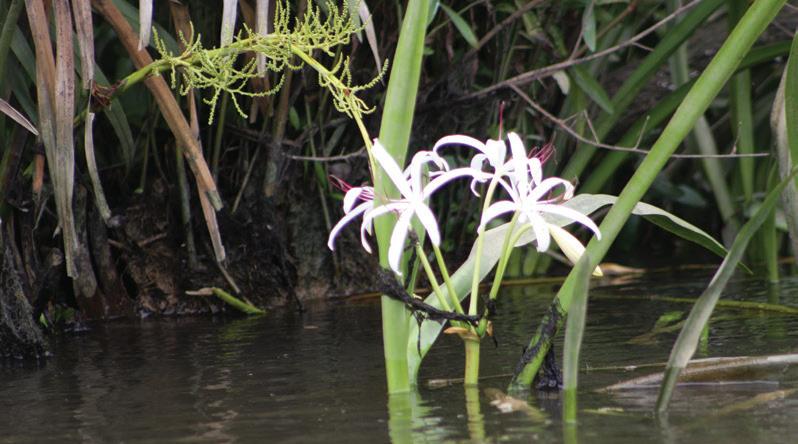


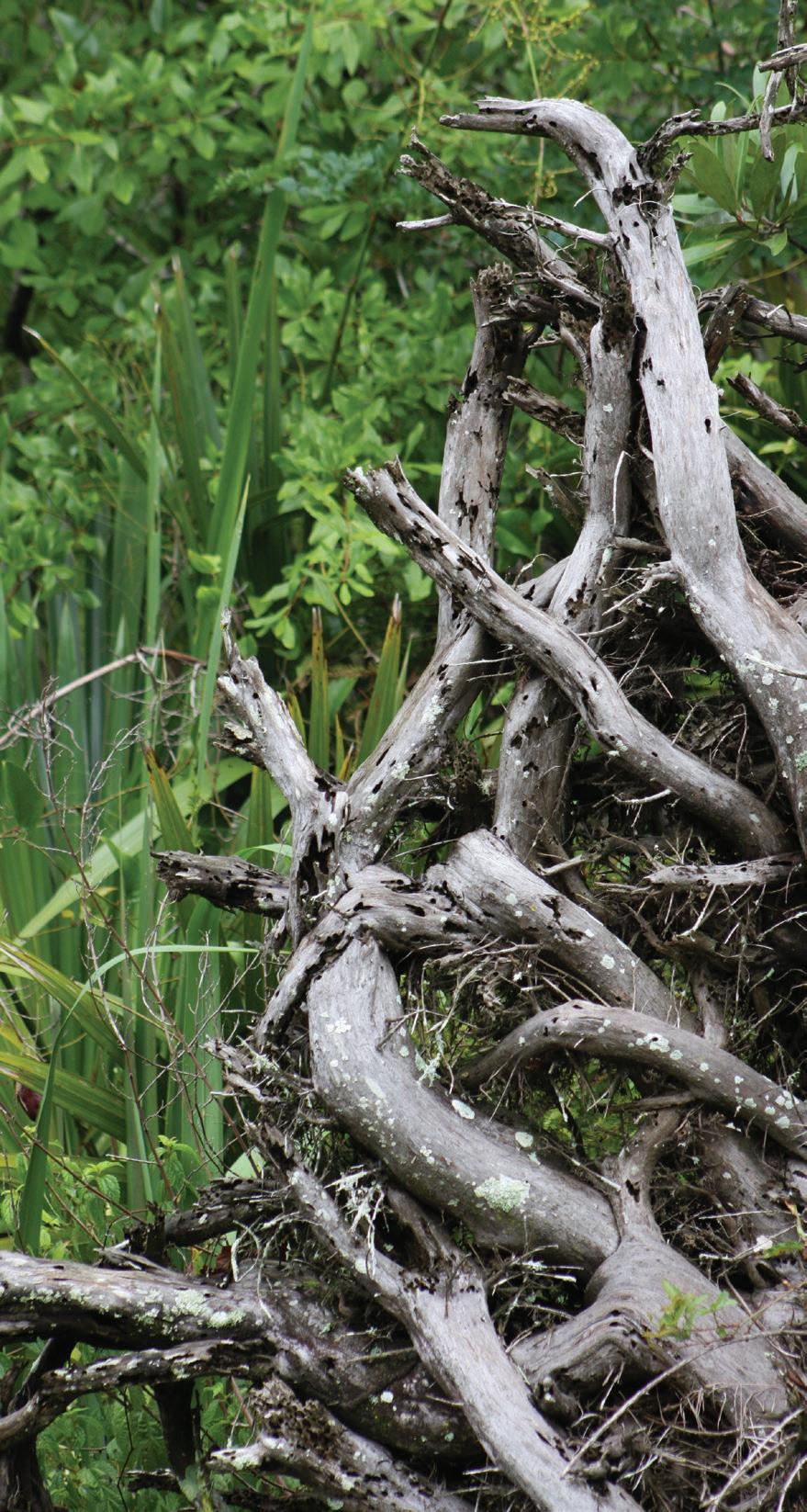
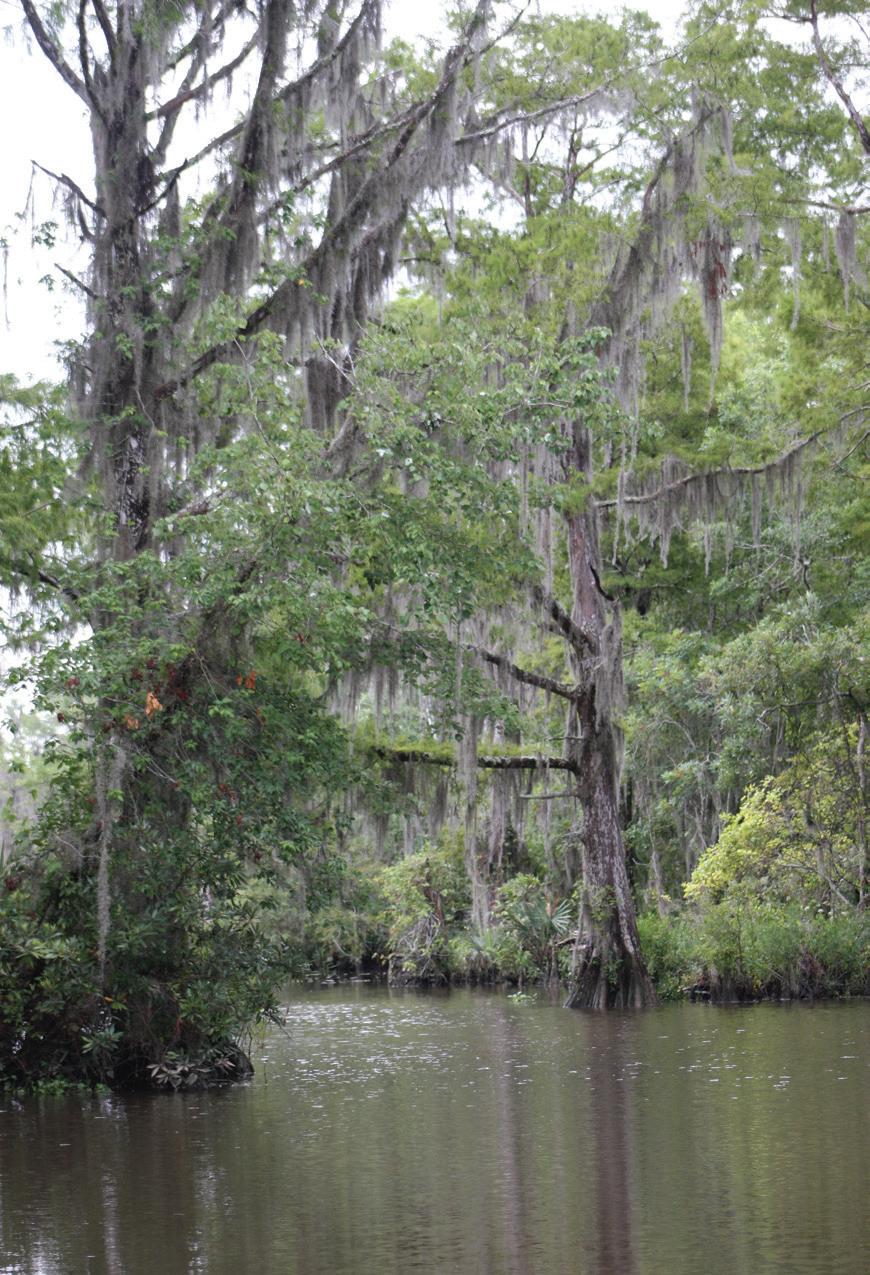
18 | Embrace Your Cultural Story
Photos courtesy of EcoTours of South Mississippi
explorers an unforgettable experience along miles of beaches, rivers, creeks and bayous. There are currently 12 Blueways, or water trails, that have been mapped out for recreational canoers and kayakers within the six coastal counties in Mississippi. Here is a look at two of the Blueways available to the adventurer in us all:
WOLF RIVER runs through Harrison, Hancock and Pearl River counties. This Blueway is named after the Red Wolves that once roamed the southeastern United States. Although the Red Wolves no longer live near the river, you can still admire the other wildlife that inhabits the area. The Wolf River is home to foxes, coyotes, turkeys and songbirds, to name a few.
This Blueway offers 22 miles of water trails through a diversity of natural settings. The south side starts at the mouth of the Wolf River as an estuarine system with salt marshes in the northeast corner of the Bay of St. Louis. As you paddle north, you will find bottomland hardwoods with shallow black water and beautiful white sandbars all the way to the end of the trail just north of Cable Bridge Road in Harrison County.
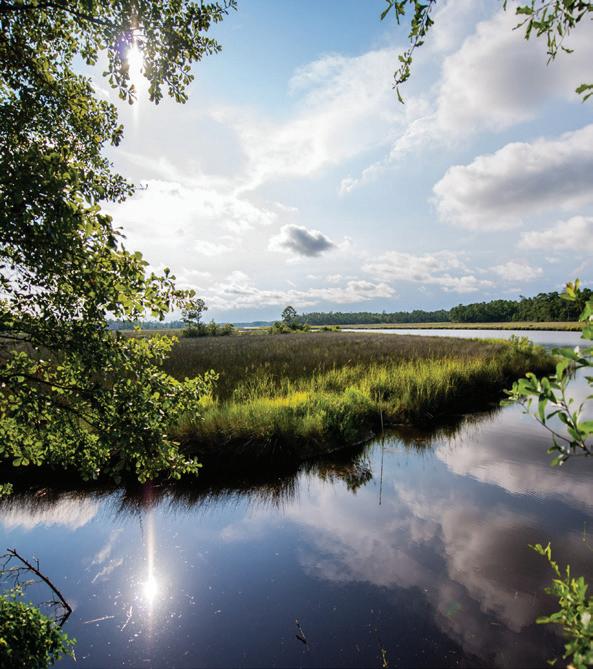
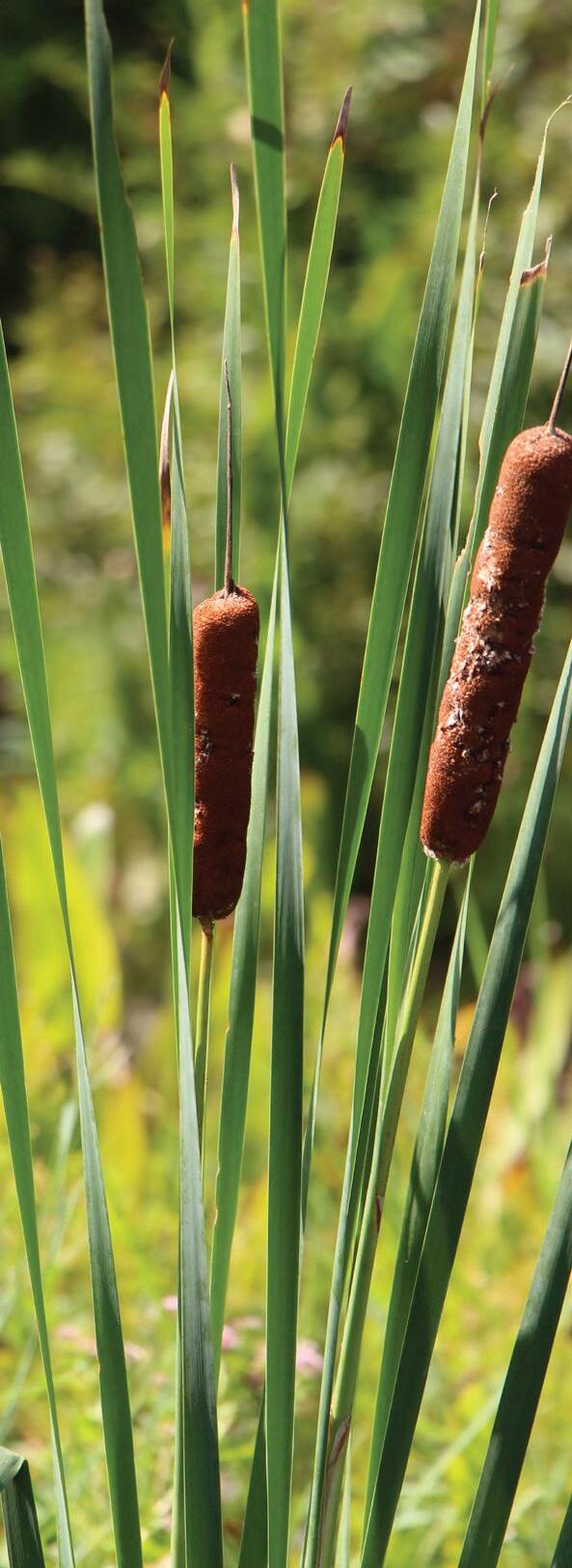


To learn more about these Blueways and others, visit the MGCNHA website at msgulfcoastheritage.ms.gov and click on the “Blueways Story Map” tab at the bottom right on the home page. The website offers full descriptions of all the Blueways with downloadable maps that include launches, mile markers and points of interest.

Natural | 19
COMMUNITY
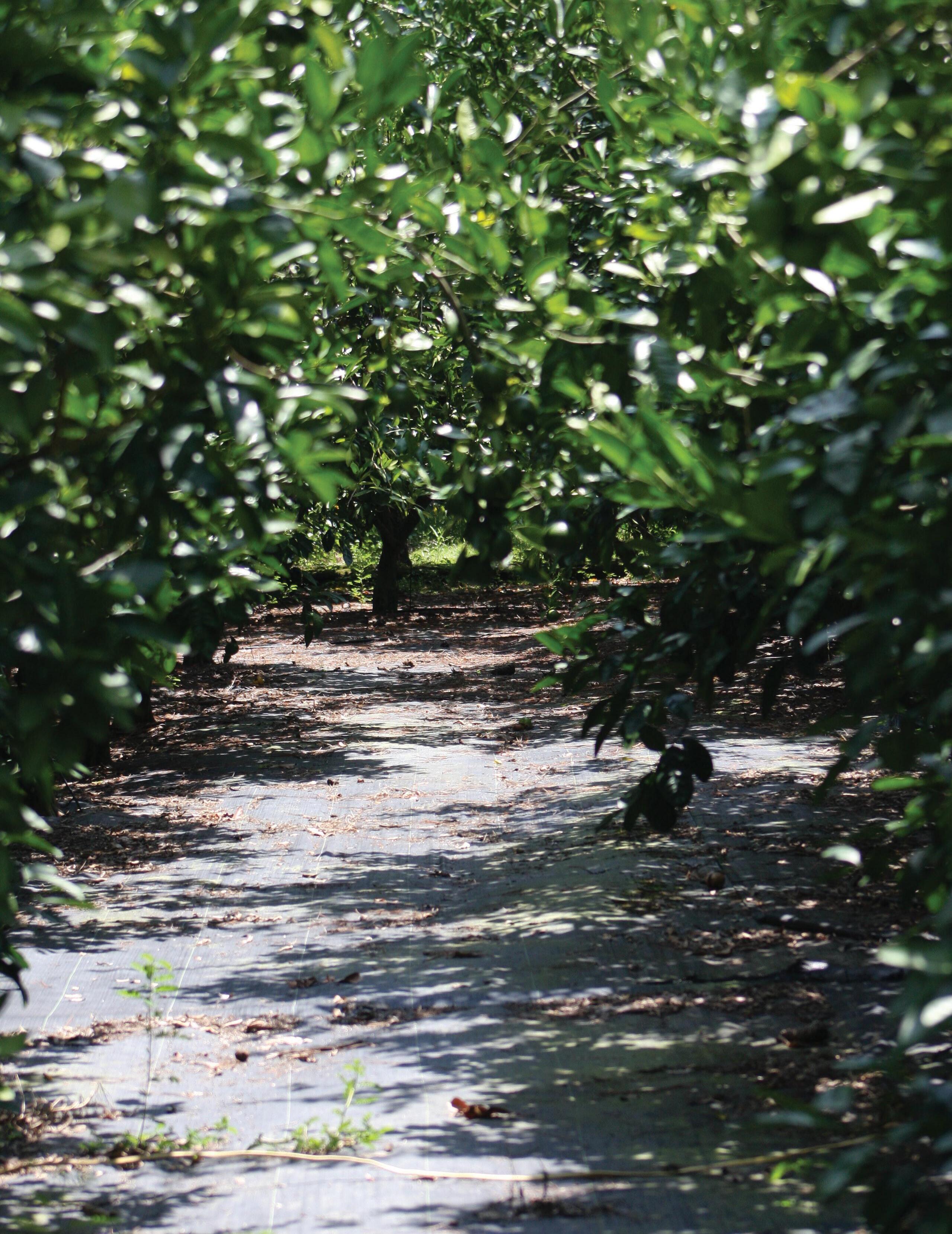
20 | Embrace Your Cultural Story
Simply the Zest
savoring the citrus of mert's satsumas
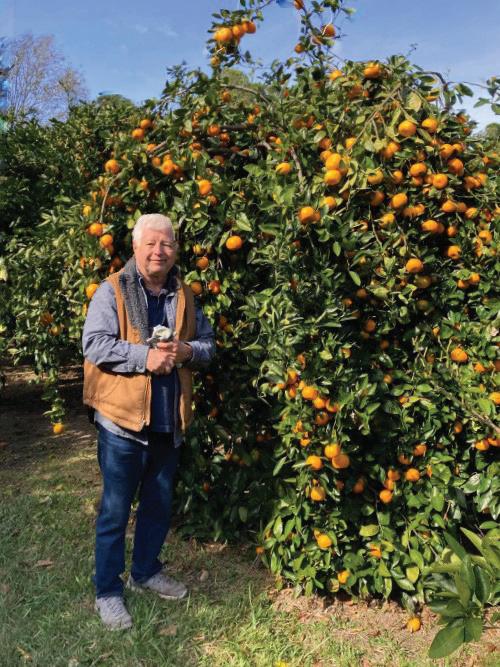
 words
words
by
roxann rankiN Wicker
Photos Courtesy of Mert's Satsumas Photos
Community | 21
My love of satsumas began when I opened a Christmas box from my grandparents. It was neatly wrapped with satin ribbon and a beautiful gold seal. I could smell the aroma oozing out from under the lid. As I opened the box, I saw these tiny, cute oranges. A bit perplexed, an odd present for a child, but I have always been a grateful receiver of any form of gifting. Once I peeled the first one and tasted the sweetest juice, my love for satsumas never left me.

Glenn Merritt, a Mississippi Power Company retiree postHurricane Katrina, dreamed of building a blueberry farm. However, the soil proved unsuitable for the bushes, posing a significant setback. Not one for defeat, Glenn found a new path when he stumbled upon citrus trees being sold at the local Kmart and co-op. He promptly bought every single one he could find and started planting them on his property. Within five years of planting those Kmart “Blue Light Specials,” he had a fruit-bearing grove.
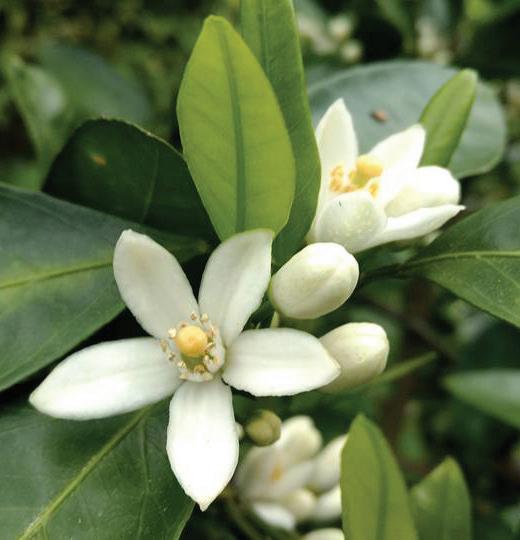
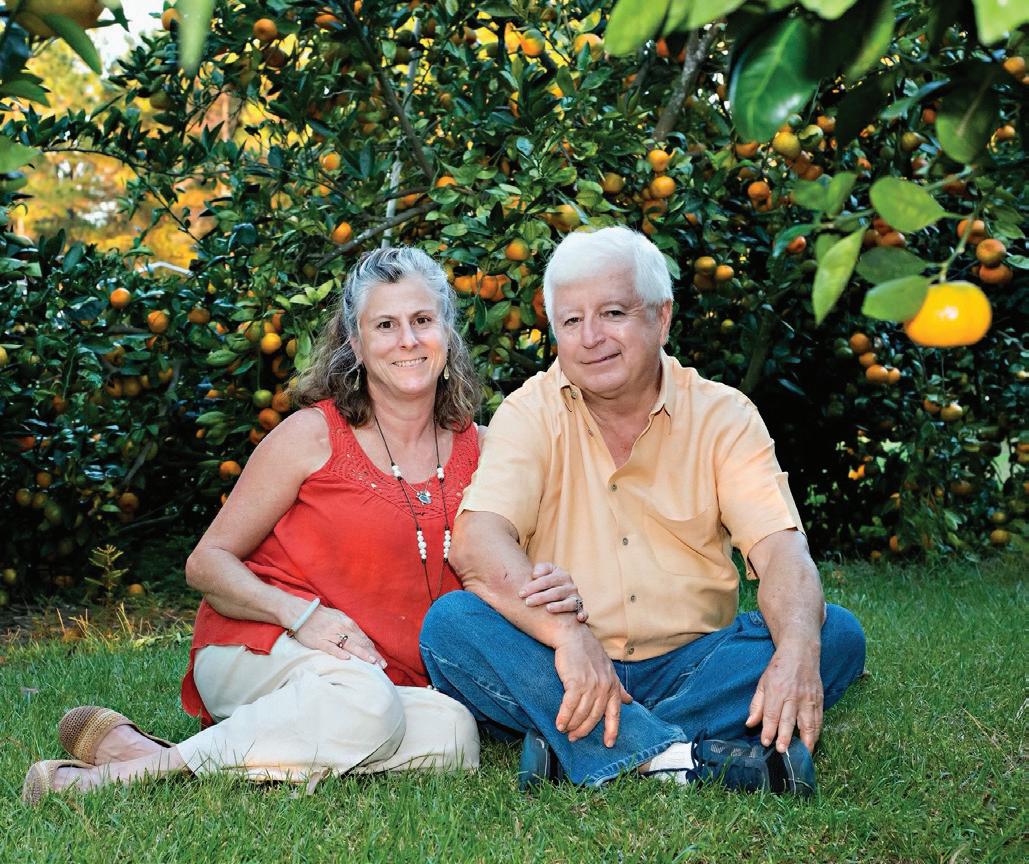
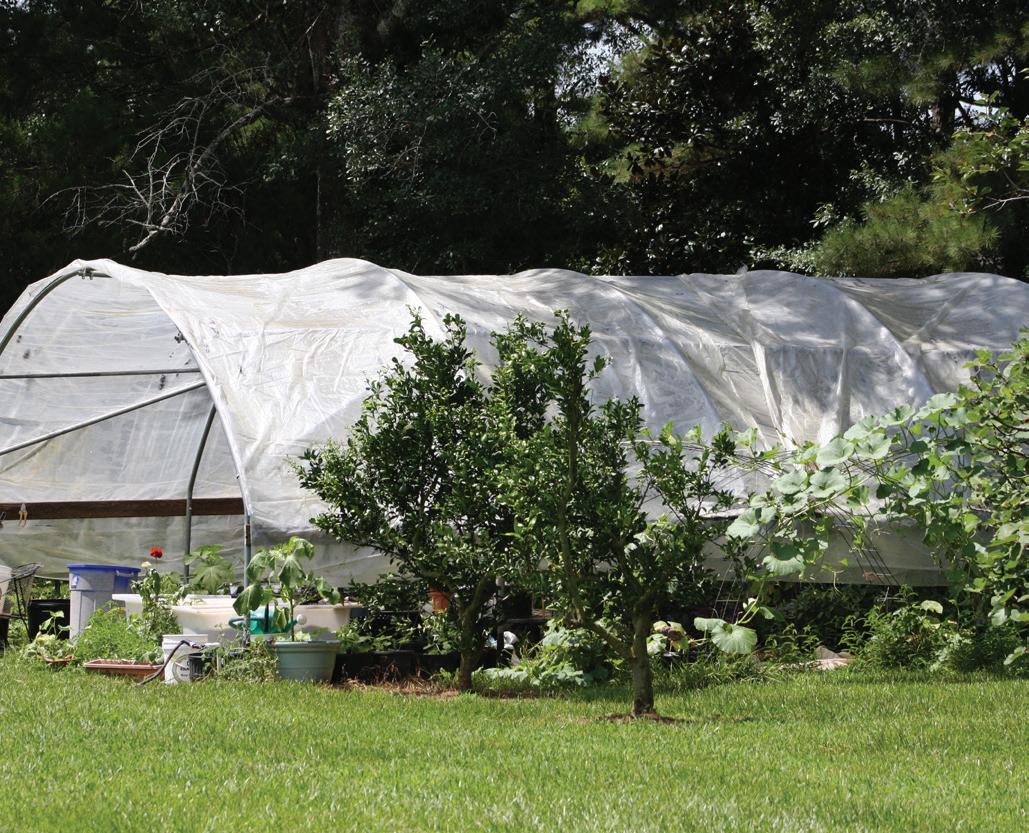


In 2011, fate had different plans in store for Glenn and Valeri, leading them to create something even more extraordinary. “Mert,” a nickname coined by Valeri from the pronunciation of their last name, planted a main grove on a section of land that was fertile from a horse pasture. With determination and hard work, Glenn and Valeri turned the well-drained land into a citrus paradise, utilizing a reliable well water system and the occasional visit from bees for pollination.
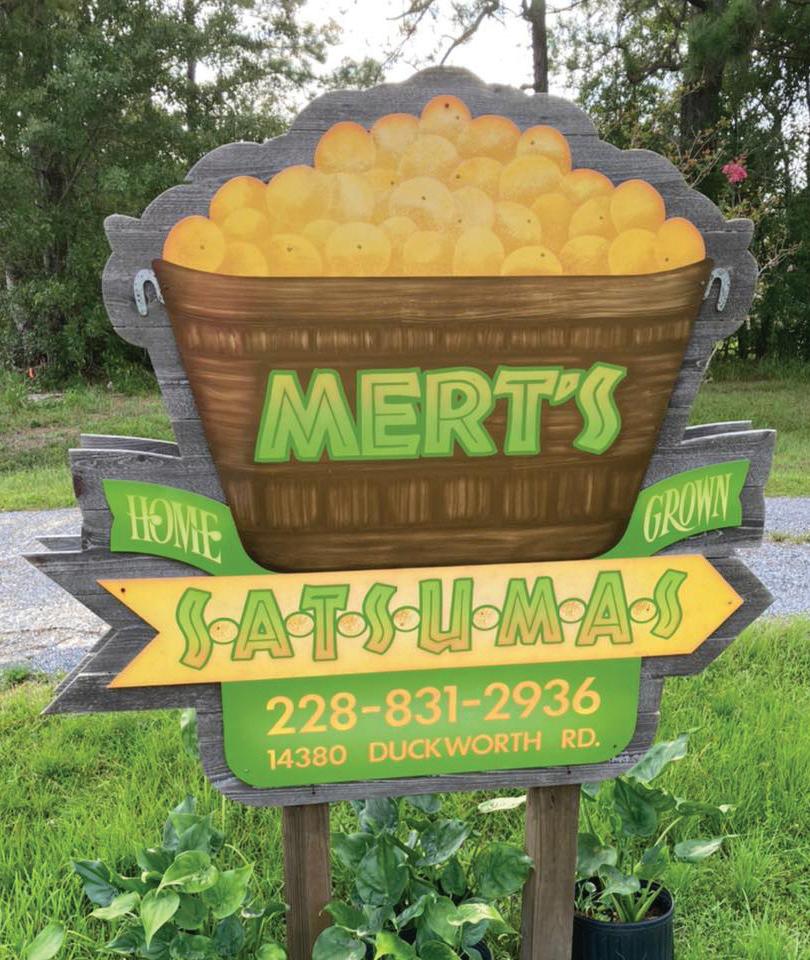
22 | Embrace Your Cultural Story
The Merritts' dedication and passion for the land bore fruit—literally. Today, the only Mississippi satsuma farm, their thriving grove boasts over 500 trees, showcasing a delightful variety of Sumo, a citrus hybrid, Pink Grapefruit, Louisiana Early's, St. Anne's, kumquats and even an array of vegetables. But their main citrus producer is the satsuma, a small, easy-peeling, delightfully sweet mandarin orange variety. Each tree can yield around 300-400 pounds of fruit, and while some varieties are overbearing, others exhibit alternate bearing patterns, keeping the couple on their toes with varying crop yields.


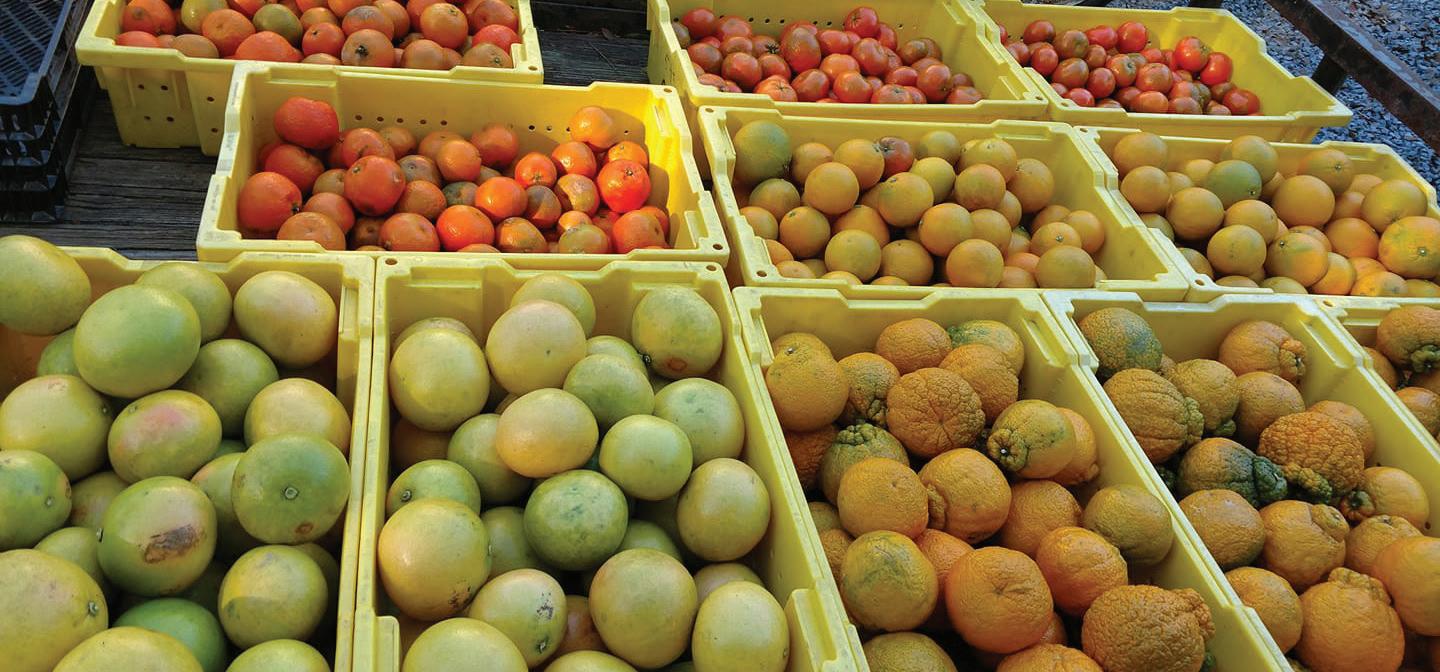
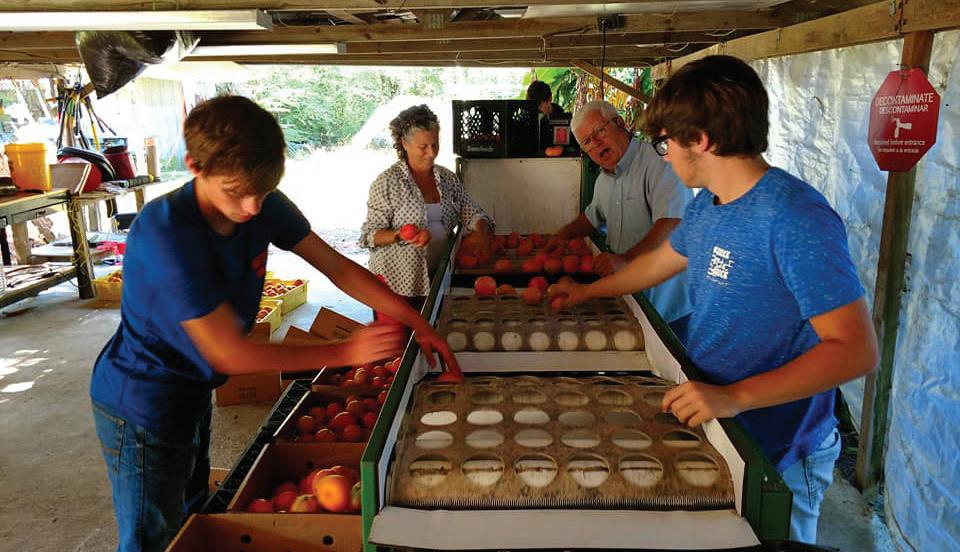



Community | 23
It's a testament to the couple's tireless efforts and love for nature. Over time, Glenn's dedication paid off, and the grove flourished, thanks to his hard work and a reliable well water system for efficient drainage. Glenn's quest for different citrus varieties took him as far as California, where he purchased Valencia trees. Faced with skepticism, he planted them in the grove, only to be amazed as Valencia's flourished, affirming that sometimes, taking risks can lead to the sweetest rewards.
Valeri, has also been instrumental in the process, nurturing the fruit-bearing trees and even utilizing the harvested fruits in her culinary ventures. She expertly crafts delectable pepper jelly, fig preserves and satsuma jelly from the fruits of their labor, adding value to their produce and delighting customers.
Opening Season: October – New Year’s Day Sold by 25# box or 5# bag
Mert’s Satsumas –Glenn & Valeri Merritt 14380 Duckworth Road Gulfport, MS 39503
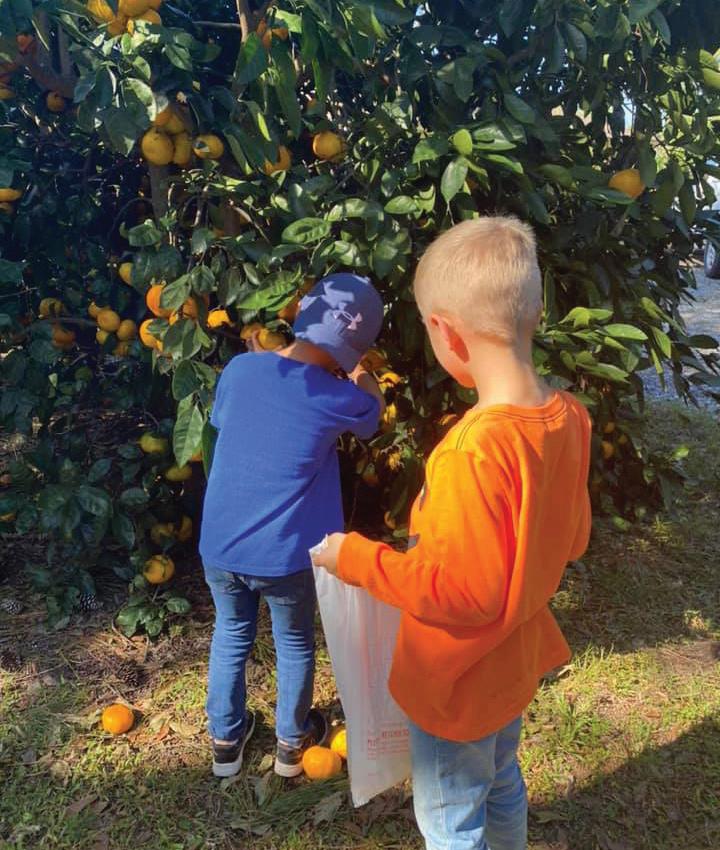
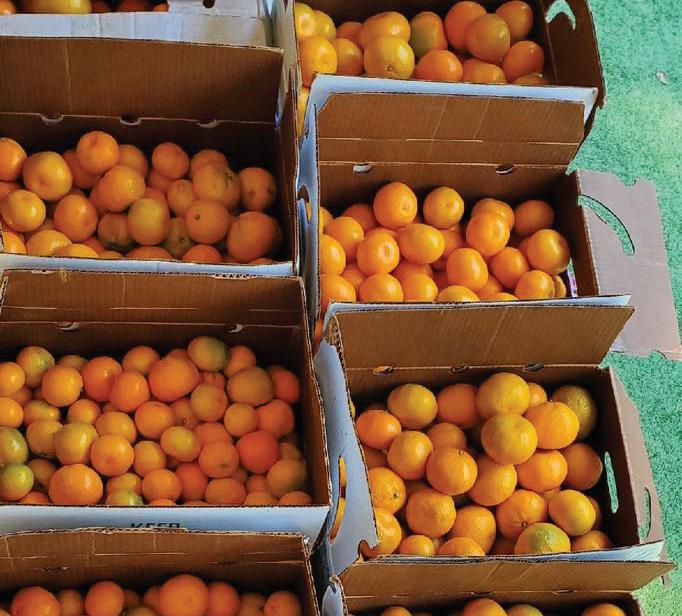
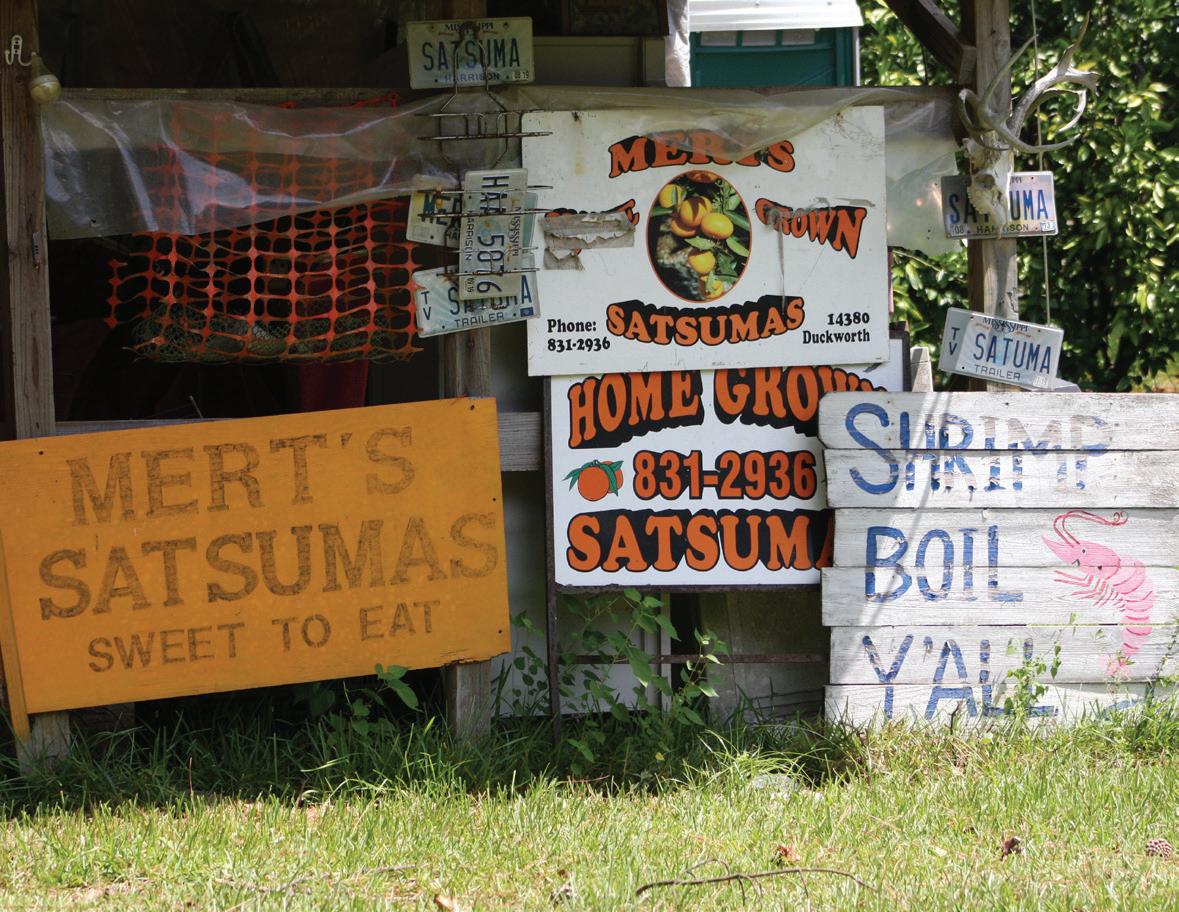
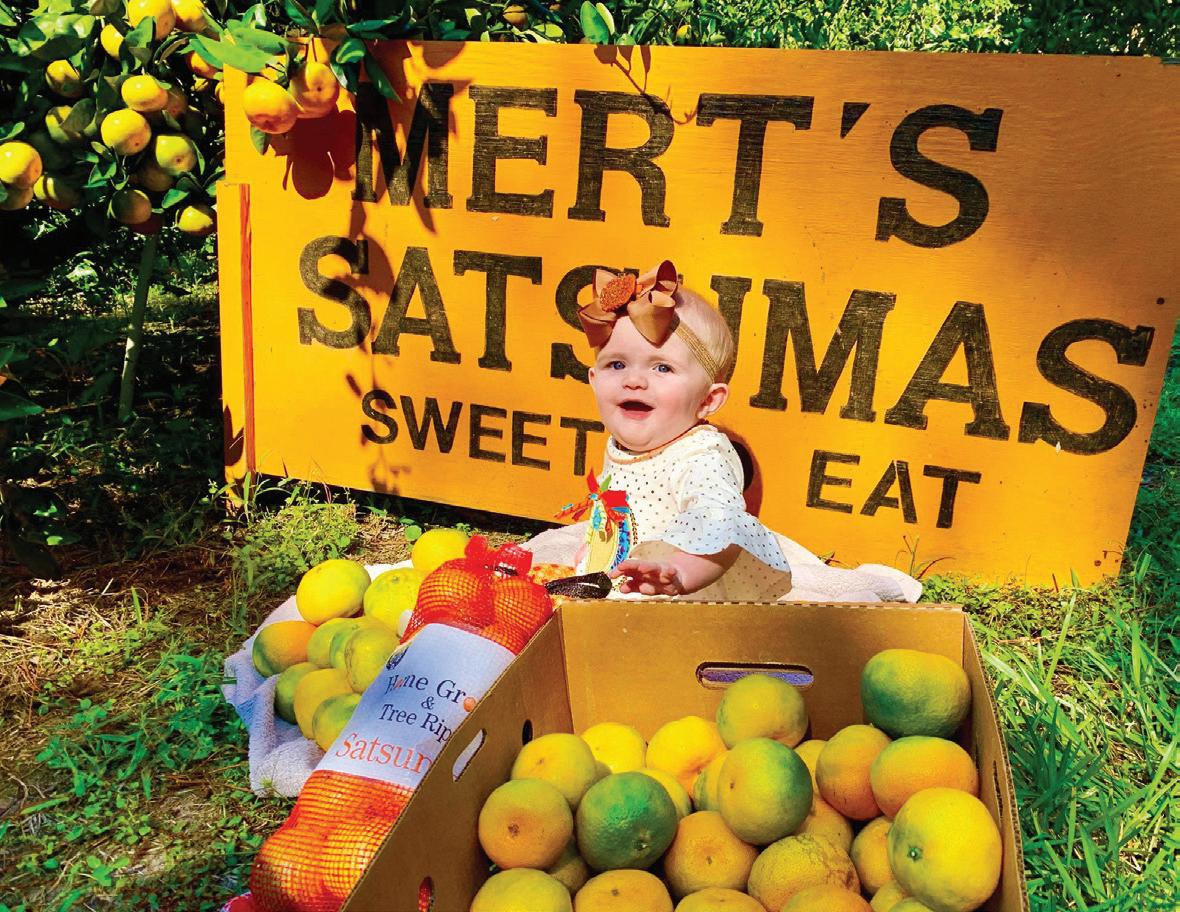
 (Top left) Adisyn Flowers, daughter of Daphne and R.L. Flowers
(Top left) Adisyn Flowers, daughter of Daphne and R.L. Flowers
24 | Embrace Your Cultural Story
However, no journey is without challenges, and Glenn encountered his first hiccup earlier this year. He learned there was a potentially fatal disease-infected insect known as the Asian citrus psyllid that may have brought the dreaded “citrus greening” to the grove. The bacterium transmitted by this tiny insect left Glenn concerned for his precious trees.
According to the USDA, citrus greening is one of the deadliest citrus plant diseases, while the disease poses no threat to humans or animals, it has devastated millions of acres of crops throughout the United States and abroad. Information provided by the Florida Department of Agriculture and Consumer Services noted, even though the pathogens are bacteria, the disease does not spread by casual contamination of personnel and tools or by wind and rain. The disease can spread through plant grafting and movement of infected plant material.
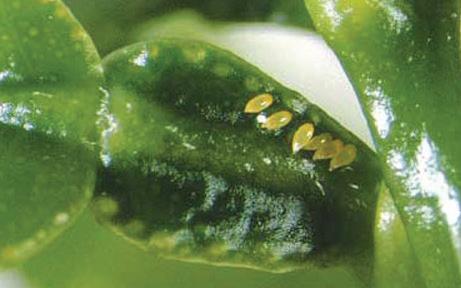

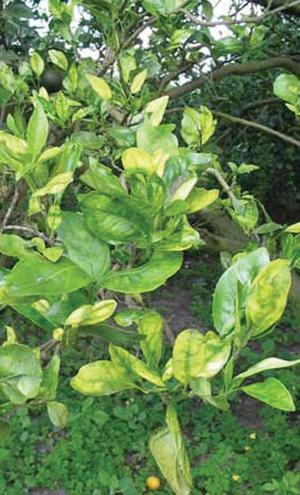


Community | 25
(Clockwise from top left, courtesy of The University of Florida) Asian Citrus Psylid diaphorina; Infected Sweet Orange Tree; Diseased grapefruit; Asian Citrus Psyllid diaphorina eggs
Undeterred, Glenn collaborated with the USDA and the Mississippi State University Extension Service to tackle this issue head-on. Although there is no cure for citrus greening, Glenn remains steadfast in his determination to protect the grove. With dedication and empathy, Glenn and Valeri decided to sample trees in the grove for signs of infection.
Thankfully, the USDA tests came back negative on one of their trees, otherwise, they would have had to quarantine the remaining and halt the sale of the affected crop to protect both their customers and the grove production.

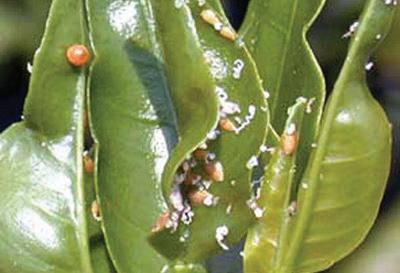

“Citrus greening disease is one of the most serious citrus diseases in the world,” said Dr. Eddie Smith, an extension agent with Mississippi State University Extension Service. “Once citrus trees are infected by the bacteria, there is no cure for the disease. Infected citrus trees produce unsellable fruit, decline in health and die within a few years.”
- Dr. Eddie Smith
Glenn and Valeri Merritt's story is an inspiring tale of dedication, adaptability and empathy. They have transformed a retired life into a purposeful journey filled with the sweetness of their citrus fruits and the warmth of their hearts. As they continue to work hand in hand with the land and nature, the legacy of Mert's Satsumas is sure to bear fruit for generations to come.
So, as the sun sets on Mert's Satsumas, we can't help but be inspired by this incredible story, reminding us that even in the face of adversity, the sweetest fruits of life can still be savored.
(Top to bottom, courtesy of The University of Florida) Asian Citrus Psylid, diaphorina; Asian Citrus Psylid diaphorina white excretions; Greening
"
Once citrus trees are infected by the bacteria, there is no cure for the disease. Infected citrus trees produce unsellable fruit, decline in health and die within a few years.
"
26 | Embrace Your Cultural Story
Growing Citrus in the South
How to grow:
Due to potential freezes, citrus can be plentiful in certain areas of the state. Mississippi is in a zone that does freeze; however, limited crops are lost.

Usually, by March, the shoots begin to flower. Citrus trees have both male and female parts within the same flower and will pollinate themselves, this is why there is no need for pollination from bees, but it can happen.
flourishing citrus:

For citrus to flourish, welldrained soil is imperative, slightly high levels of acid and full sunlight.
Best Planting::
When planting, it is best to plant between January and February with a root spacing 15-20 feet in diameter, fertilizing annually for high yields and the highest quality.
U.S. Department of Agriculture Plant Hardiness Zone Map, Mississippi, Courtesy of USDA.
Community | 27
LIFE
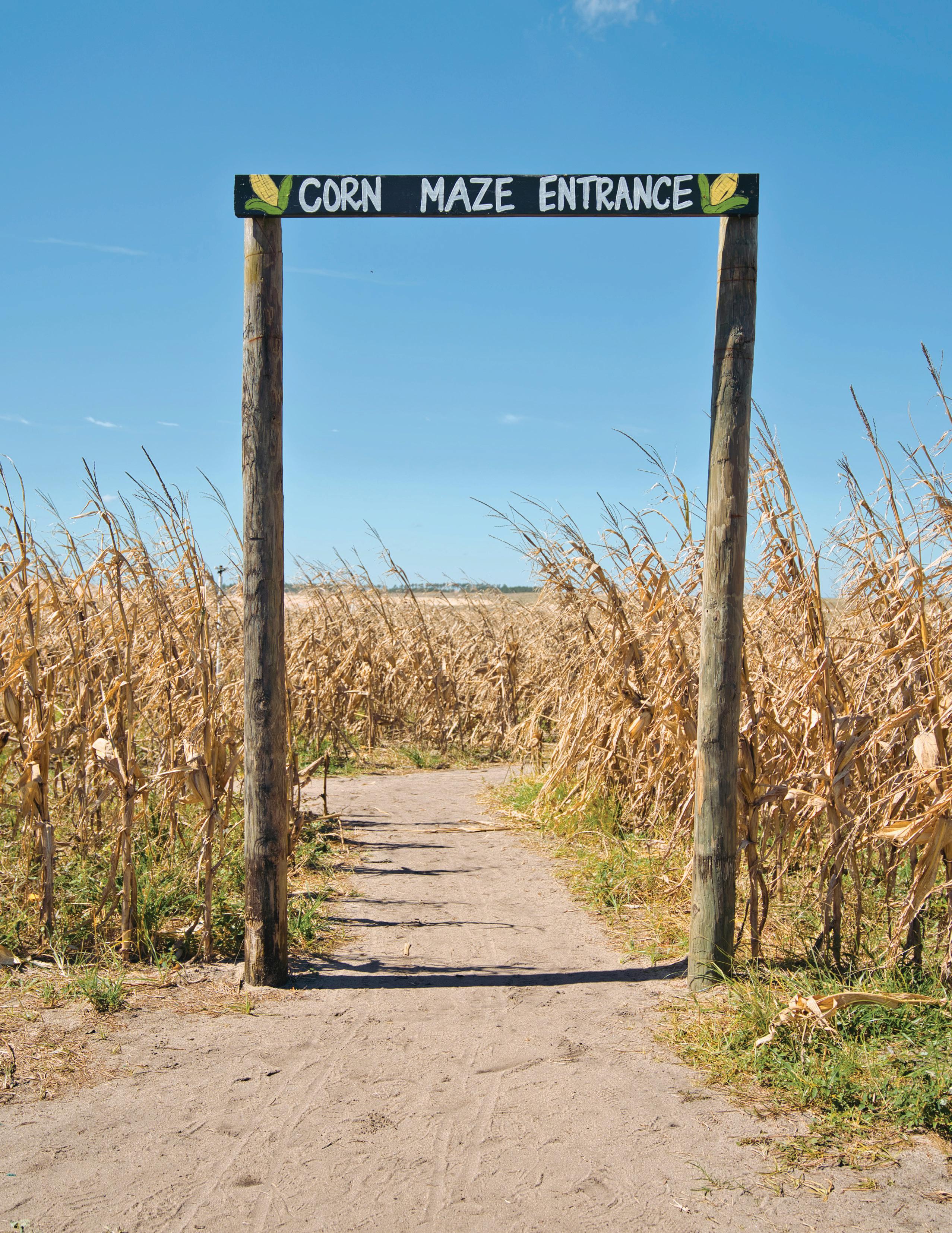
28 | Embrace Your Cultural Story


Life | 29
Cultivating Love, Creativity and Community in Every Row
- BY ROXANN RANKIN WICKER -
Jim and Jill Eastridge, the dynamic duo behind Eastridge Farm, have a story that is as sweet as honey. Jim, fondly known as the “Melon Man” in their local community, found solace in farming after his 25-year marriage came to an end. Partnering with his brother and utilizing their family's land, he began growing and selling roadside watermelons, unaware that this venture would lead him to love and a new business path.
The serendipitous meeting between Jim and Jill took place one fateful Wednesday while Jim was selling his watermelons by the side of the road. Jill, a former registered nurse who attended the same church as Jim, approached him with a warm compliment, calling him "the bee's knees." Intrigued, but puzzled, by the pun, Jim asked for an explanation, and Jill charmingly clarified the sweet analogy. With their curiosity sparked, they exchanged phone numbers, and a new friendship was born that day.
Eastridge Farm was not initially planned; it emerged through a series of fortunate events. In 1919, the land on Brown Road was acquired by Green Brown. Brown would go on to have a son, Herbert Brown. Herbert and his wife Rhoda, affectionately known as "Rhodie," left her property
to her niece, Vee, who she considered like a daughter since the couple never bore children. Vee, who is Jim’s mother, initially used the land for cattle and watermelons for personal consumption. It wasn't until Jim and his eldest brother decided to venture into watermelon farming that the land's true potential was realized.
 Pictured left to right: Jill, Vee and Jim Eastridge.
Pictured left to right: Jill, Vee and Jim Eastridge.
30 | Embrace Your Cultural Story
As Jim and Jill's relationship blossomed, they realized they were not just partners in love, but also ideal business partners. Their strong bond and shared vision led them to tie the knot during the challenging times of the COVID pandemic. With friends virtually present on Facebook Live, the couple embarked on a road trip honeymoon, exploring various states and coming across corn mazes and pumpkin patches. Inspired by the experience, they decided to create their own corn maze back home. Jill, proactive and resourceful, reached out to their mutual friend Jason "The Professor" Glydewell. Despite not being an actual professor, Jason's brilliance and innovative mindset made him an invaluable asset. Leveraging his electronics degree from the University of Southern Mississippi, Jason developed the schematics for their exciting new corn maze venture. With prior experience designing labyrinths in smaller spaces, Jason embraced the challenge of creating a captivating corn maze for the farm. Armed with determination and a limited budget, he enlisted the help of friends from the Mississippi State University Extension Service to select sorghum and sudangrass for the maze—crops that are not only soil-friendly, but also resistant.
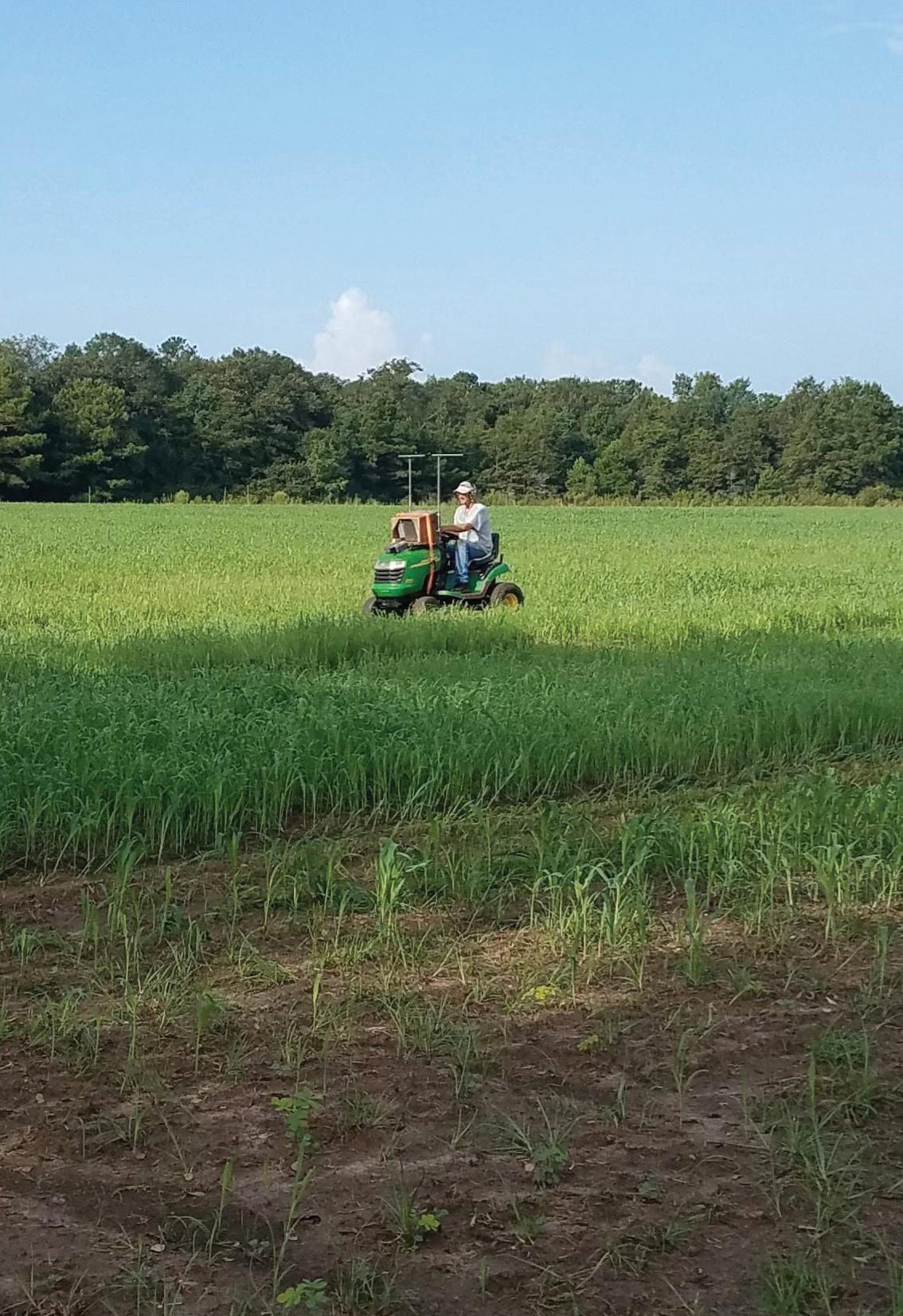
Jason's resourcefulness came to the forefront when he devised a plan to execute the intricate artwork without high-tech equipment. Using his electronics background, he cleverly mapped out the design on Google Earth with only a laptop and a trusty John Deere tractor. The result was a stunning locomotive-themed maze, an ironic choice that added an element of playfulness to the experience.
The following year, in collaboration with local artist Ashley Mason, Jason brought the design to life, turning the field into a thrilling adventure for visitors. Eastridge Farm’s first corn maze became a hit in the community. The success of their inaugural venture inspired them to create an even more adventurous and exciting maze with a thrilling pirate theme this year.



Life | 31
Photos courtesy of Jason Glydewell
While Jim found success with his watermelons and Jason with the corn maze, Jill had a different journey after leaving her nursing career. Feeling burnt out and in search of a new challenge, she looked for ways to contribute to their farm's income. Inspiration struck when she found herself amidst the buzzing bees in the watermelon patch. She knew right then that she wanted to give these energetic insects a home.
Jill's determination led her to seek out a local honey keeper, who generously allowed her to shadow and learn from her expertise. What started as an apprenticeship soon turned into a full-fledged passion for beekeeping. Jill ordered the necessary equipment and delved into countless hours of reading and research to get started. Though her first year was filled with challenges, Jill remained undeterred. Her goal was clear—to honor the legacy of Jim’s great-aunt Rhodie, who had willed the family farm.
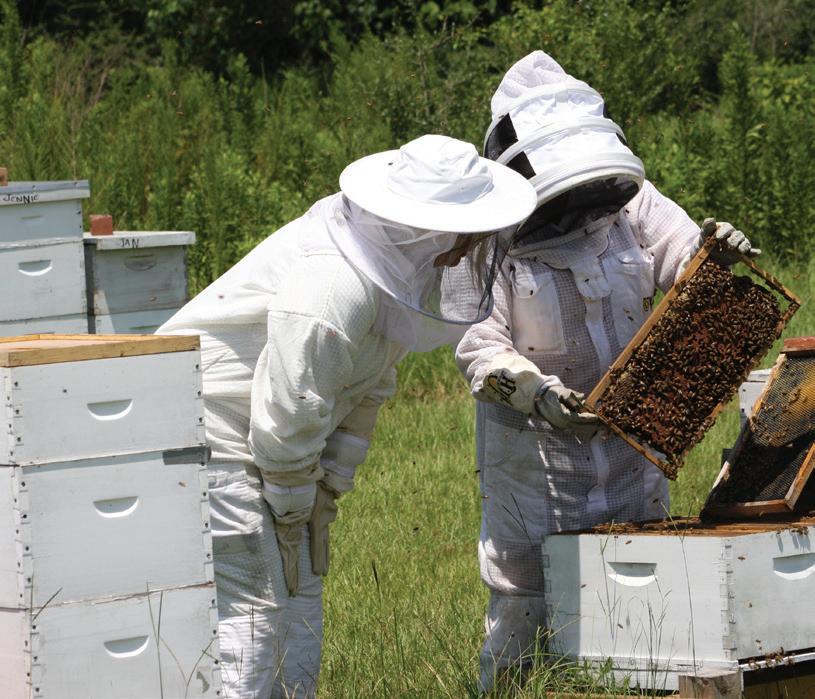



Word quickly spread through the community about the Eastridge Farm venture into beekeeping, and soon people began reaching out to the couple for bee relocation assistance. This realization led Jill to describe her new role as a "honeybee nurse," rehabilitating and caring for these vital pollinators. The rescued bees found a new home on the farm, where they now thrive and produce honey as a token of their gratitude.

32 | Embrace Your Cultural Story
From Hive to Honey: How Raising a Healthy Colony Will Produce Delicious Honey

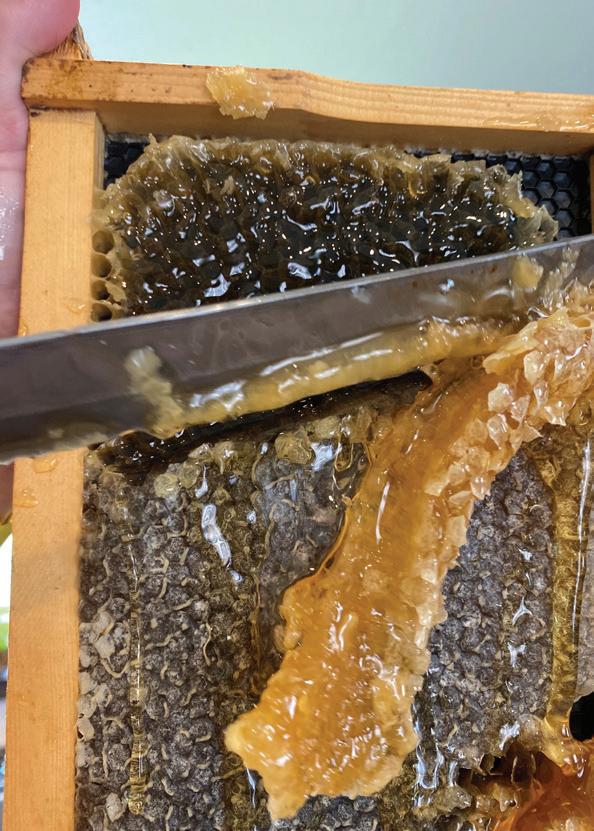


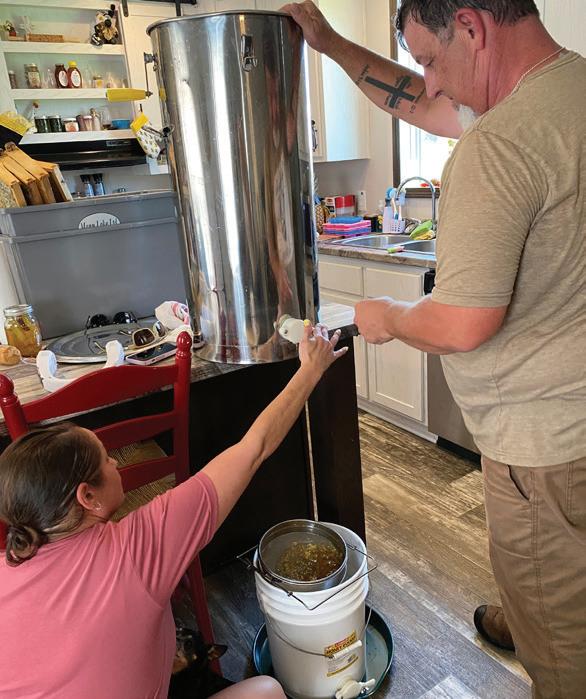
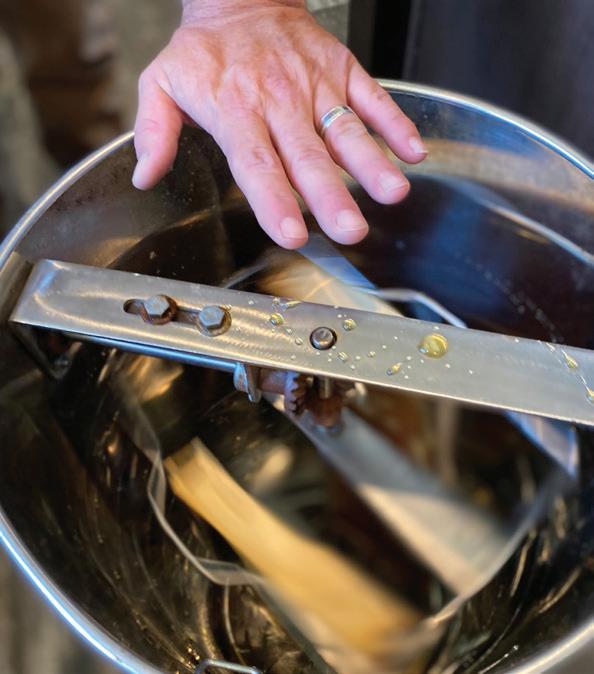
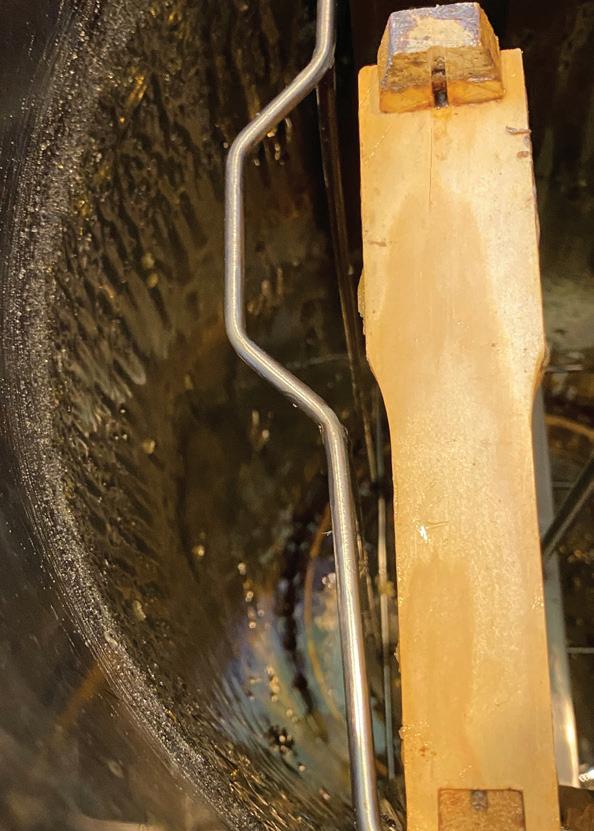 From Jim Eastridge
From Jim Eastridge
At the beginning of spring, we add what’s called a “honey super” box on top of the brood box where the bees overwintered. Usually, they are smaller boxes than the brood boxes, about three inches shorter. A special screen called a queen excluder is placed between the brood boxes and the honey super. This allows the worker bees to access the super and produce honey while the queen bee is too big to fit through the openings and can’t lay eggs in that area. Therefore, when it’s harvest time, you know there will only be honey in the “honey super” boxes. Throughout the season, or “nectar flow,” we check each hive up to around two and three times per week. This is when things heat up - literally. We are checking the hives in the middle of the day in a triple-layer mesh bee suit, or at least a bee jacket, long pants and screened bee veil, in south Mississippi, in May, June, July… get the picture? It is hot! In a heavy flow, the bees can fill a box with honey pretty quickly. When they do, we add another box on top and sometimes more on top of that. For us, harvest season is usually within the first couple weeks of July. When it’s time to harvest, we remove the boxes, each with 10 frames of capped honey. We uncap the frames to expose the honey and spin the frames in a honey extractor machine. It spins the honey out of the comb and the honey drains into a tank. From that tank, we run the honey through a double screen strainer, to remove any wax particles, into a bucket for storage, then from the bucket straight into our bottles and ready for you to enjoy.
Life | 33
Jill's dedication to her bee colonies is nothing short of heartwarming. Each hive is labeled with a special reminder of the unique traits of the bees residing within - one box even named “Rhodie.” She attends to their needs, occasionally feeding them sugar and water, all while trying to minimize the use of smoke—a gentle and nurturing approach that mirrors her past experiences as a nurse for humans.
Jill and Jim have been harvesting honey from their bee colonies for the past three years using a two-frame spinner. They sell their delicious honey to locals and mercantiles, delighting customers with the natural sweetness produced right on Eastridge Farm.
As if beekeeping and honey production weren't enough, the couple recently expanded their business horizons. They seized an opportunity to purchase a freeze-dried candy company, adding yet another unique product to their ever-growing list of items produced on the farm.
Today, Eastridge Farm stands as a testament to the power of love, friendship and family legacy. Jim and Jill's partnership flourishes romantically and professionally as they continue to nurture their farm and cultivate the love they have for each oth er and their land. Their story reminds us that life can take unexpected turns, leading us to new beginnings and opportunities we never knew were possible. With the sweet taste of success and the warmth of their love, Jim and Jill Eastridge have truly found their own slice of heaven on Eastridge Farm.
HOURS OF OPERATION
Because of the summer drought of 2023, the opening season target date has been pushed back to mid-to-late October, please check the Eastridge Farm social media page for updates.

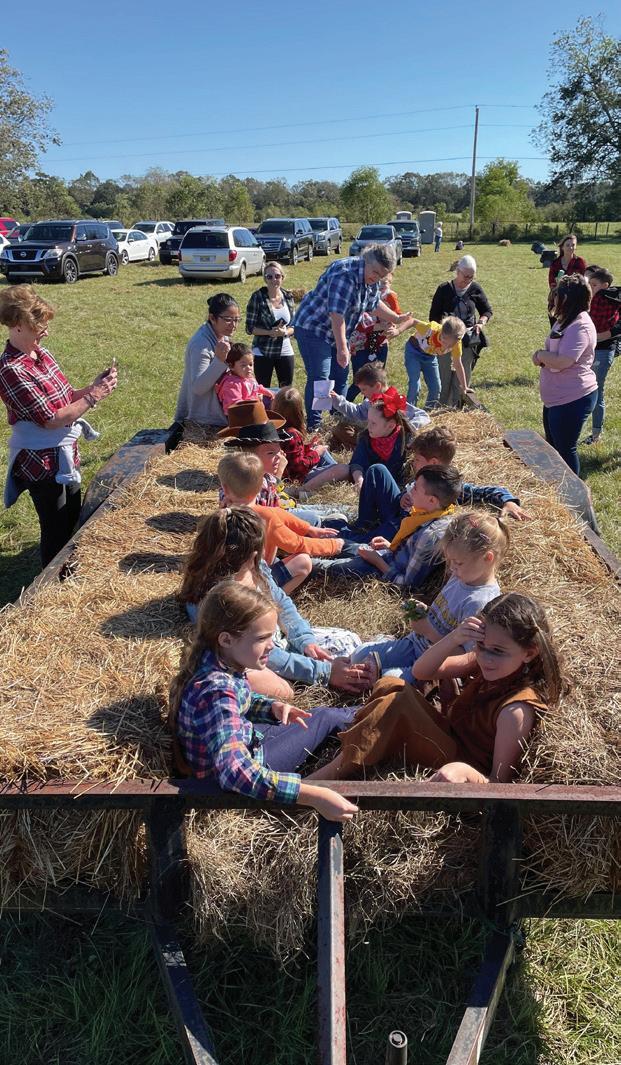

EASTRIDGE FARM CORN MAZE DATES AND TIMES 22044 Eastridge Lane, Picayune, MS 39466 • 601-590-4375
34 | Embrace Your Cultural Story
Seward Farms: Agriculture Meets Adventure
By RoxAnn Rankin Wicker
In the northeast corner of Jackson County, Seward Farms stands as a testament to the peaceful coexistence of a 5,000-acre working farm and an engaging familyoriented destination. Owned and managed by the Seward Family for four generations, Susan Seward has made this a beloved hub for both agricultural enthusiasts and those seeking a wholesome adventure. Seward Farms has successfully struck the perfect balance between education and entertainment with a diverse range of activities and attractions.
Seward Farms is a beef cattle, peanut, cotton, corn and oat farm and is the last largest producing working farm in Jackson County. While Seward Farms is well known for its production, we are here for the fall corn maze and family-friendly fun.
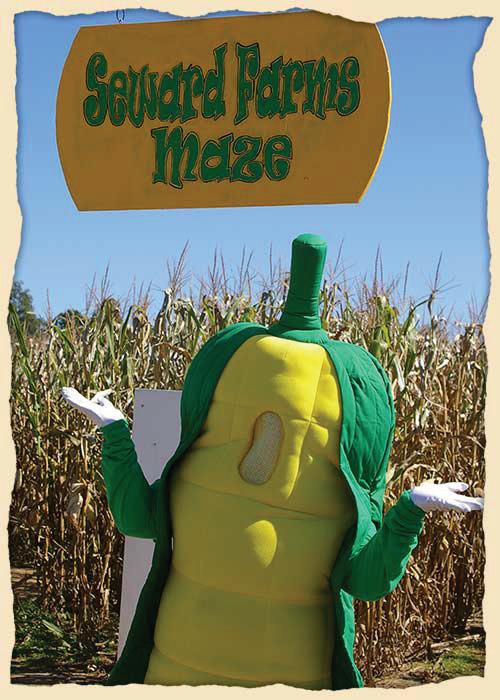


At the heart of Seward Farms' charm lies its annual corn maze. Since 2002, their corn mazes have drawn local students, visitors and community residents alike. Kicking off in October, the corn maze, with its everchanging farm-themed designs, entices its visitors year after year. Susan says they start off with a hand-drawn design on paper, they then work on cutting the field from the drawing template. Using a drone, the intricate pattern is carved into the vast cornfields resembling mesmerizing works of art.
Visitors navigating through the maze encounter interactive information, offering a fascinating learning experience in an outdoor setting.
Beyond the captivating corn maze, Seward Farms boasts an array of attractions that cater to families seeking a day of excitement. The farm's hayrides allow visitors to leisurely explore the vast property while enjoying scenic views of the surrounding landscapes. For the little ones, giggles are guaranteed as the cow train offers a fun-filled journey around the farm. The jumping pillow, a massively inflated surface, becomes a hub of laughter as children bounce and play to their heart's content.
Adding to the allure, Seward Farms' petting zoo beckons visitors with a delightful array of friendly animals. Donkeys, horses, goats and a host of other furry friends eagerly await affectionate interactions with visitors, providing a hands-on encounter.

Susan Seward's commitment to preserving and promoting agricultural traditions is evident in every aspect of the farm's offerings. The farm fosters an appreciation for the hard work and dedication involved in farming by providing a 20-minute educational tour for visitors to learn about agriculture's vital role in our daily lives.
Seward Farms has undeniably carved a special place in the hearts of locals and tourists alike. It's a place where learning and entertainment converge, a space where families can escape the hustle and bustle of city life and embrace the serenity of rural living. As the sun sets on another successful season, visitors leave with cherished memories and a deeper understanding of the farming heritage that sustains us all.
Life | 35
FLAVORFUL
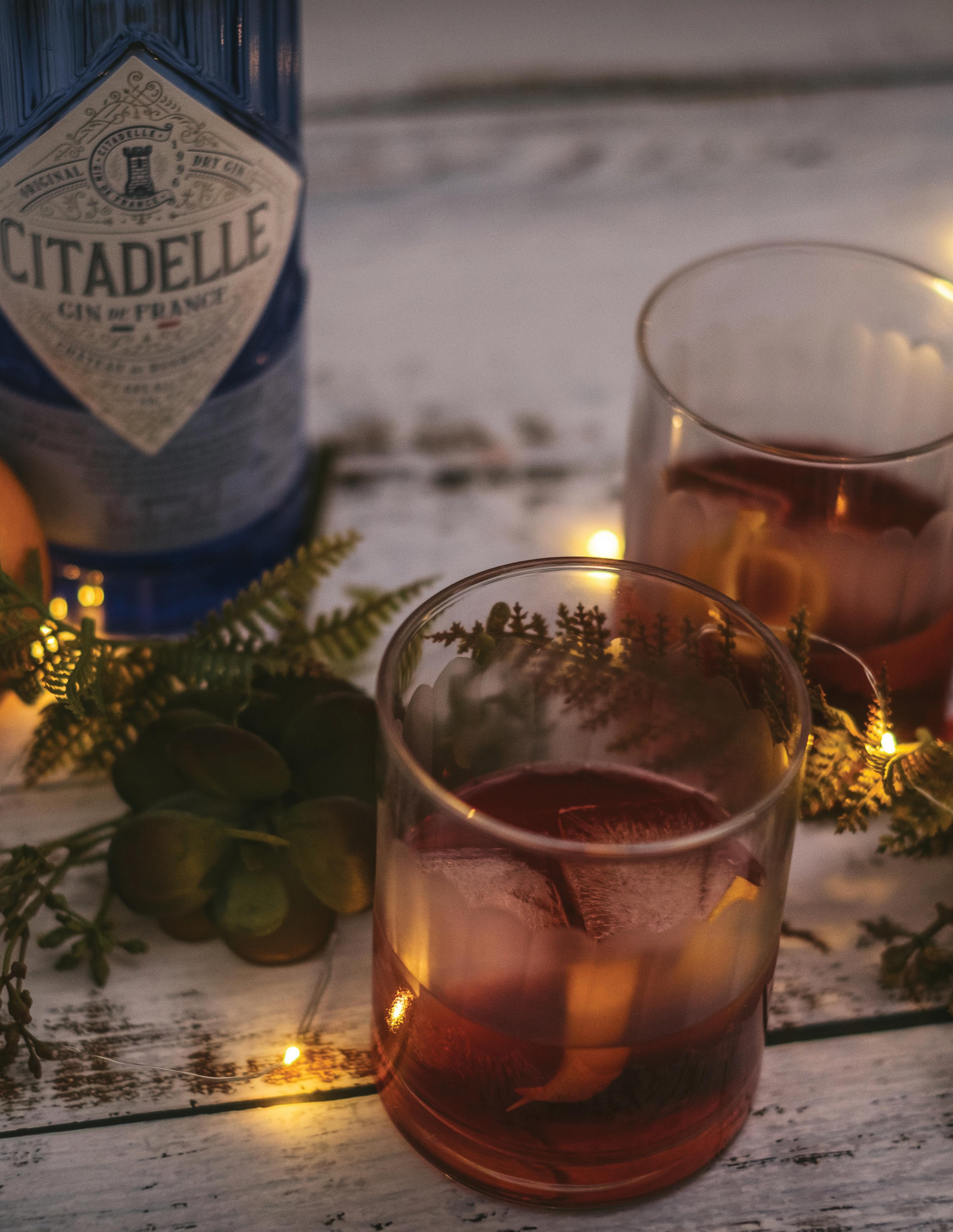
36 | Embrace Your Cultural Story
Bayou Sour Cocktail : Sip andSavor
Raise a glass to the past with a collection of satsuma-inspired cocktails that pay homage to the Era of Prohibition. Learn the art of mixing and enjoy a sip of the past with a modern twist.
BAYOU SIDECAR COCKTAIL
Ember Bayou Sidecar Cocktail drink recipe. A rum based cocktail that's well balanced, and perfect for sipping.
Prep Time: 2 minutes
Total Time: 2 minutes
Ingredients:
• 1 oz Bayou Select Rum
• 1 oz Bayou Satsuma Rum
• 1 oz fresh lemon juice
• ½ oz simple syrup
• Ice
• Sugar for the rim
Instructions:
Wet the rim of a glass and dip in sugar. Measure all ingredients into a shaker and add ice. Shake well. Strain into a chilled cocktail glass with a sugar rim.
SATSUMA SYRUP
*A modification of Ina Garten's Marmalade Recipe
Yield: 8 (10oz) jars
Ingredients:
• 2lb ripe Satsumas
• 2 lemons
• 8 cups water
• 8 cups sugar
Special Equipment:
• 8 (10oz) Mason Jars with lids (sterilized)
• Jar Funnel and Tongs (sterilized)
Method:

Cut satsumas and lemons in half crosswise, then into very thin half-moon slices. Discard any seeds as you go. Place the sliced fruit and their juices into a stainless-steel pot. Add 8 cups water and bring the mixture to a boil, stirring often. Remove from heat and stir in the sugar until it dissolves. Cover and allow to stand overnight at room temperature.
The next day, bring the mixture back to a boil. Reduce heat to low and simmer uncovered for about 2 hours. Turn heat up to medium and boil gently, stirring often for 30 minutes, and skimming off any foam that forms on top.
Remove from heat, and ladle into sterilized jars and seal. The heat from the syrup should cause the lids to seal, but if not, boil completely sealed and submerged for 5 minutes. Once sealed the syrup is shelf-stable for up to one year.
Ingredients:
• 1 Satsuma Orange (peeled and sectioned)
• add Ice (crushed)
• ½ cup Dry Gin

• ½ cup Fresh Satsuma Orange Juice (about 2 satsumas)
• 1 tablespoon Grand Marnier (orange-flavored liqueur)
• add Satsuma Orange Rind (optional)
Directions:
1. Rinse satsuma sections in cold water. Drain; freeze 30 minutes or until firm.
2. Place crushed ice in a martini shaker. Add gin, juice, and Grand Marnier to shaker; shake well. Strain 1/2 cup gin mixture into each of 2 martini glasses. Add 4 frozen satsuma to each glass. Garnish with rind,
Flavorful | 37
Rum Cake Recipe
 JoAnn Thompson
JoAnn Thompson

Ingredients:
• 1 cup coarsely chopped pecans


• 1 (15.25-ounce) box yellow cake mix
• 1 (3.4-ounce) package vanilla instant pudding mix
• 4 eggs
• 1/2 cup vegetable oil
• 1/2 cup water
• 1/2 cup white rum
Instructions:
For the glaze:
• 1/2 cup butter
• 1 cup sugar
• 1/4 cup water
• 1/2 cup dark rum
Preheat the oven to 325°F. Grease and flour a Bundt pan with at least a 10-cup capacity. Sprinkle the pecans in the bottom of the pan.
With a mixer, mix together the cake mix, pudding mix, eggs, vegetable oil, water and rum. Continue mixing until well combined. Pour the batter over the pecans.
Bake for 50 to 60 minutes, or until a toothpick inserted into the middle part of the cake comes out clean and the cake starts to pull away from the edges of the pan.
Make the glaze by combining the butter, sugar and water in a small saucepan. Bring to a boil, then remove from the heat. Stir in the rum. Pour over the warm cake while it is still in the pan.
Allow the cake to cool before removing from the pan.
38 | Embrace Your Cultural Story

Flavorful | 39


Phone: (228) 523-4150 Web: msgulfcoastheritage.ms.gov Email: Heritage@dmr.ms.gov Facebook & Instagram: MSCOASTNHA

















 (Top to bottom)Rum Runner seized in New Orleans Port., Credit: Smithsonian; Sailors of the 'I'm Alone', New Orleans Police Department, Credit: NY Daily News; Courtesy of US Coast Guard Archives
(Top to bottom)Rum Runner seized in New Orleans Port., Credit: Smithsonian; Sailors of the 'I'm Alone', New Orleans Police Department, Credit: NY Daily News; Courtesy of US Coast Guard Archives













 words
words






































































































































 words
words




























 Pictured left to right: Jill, Vee and Jim Eastridge.
Pictured left to right: Jill, Vee and Jim Eastridge.















 From Jim Eastridge
From Jim Eastridge










 JoAnn Thompson
JoAnn Thompson






